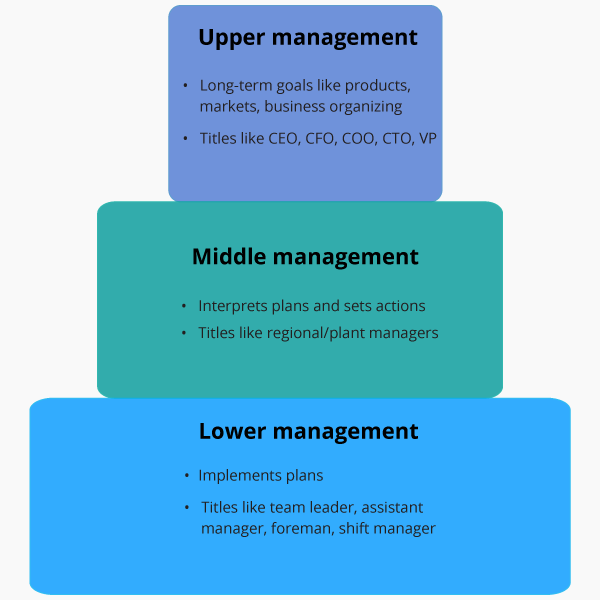
Want to create or adapt books like this? Learn more about how Pressbooks supports open publishing practices.

Types of Assignments
Cristy Bartlett and Kate Derrington

Introduction
As discussed in the previous chapter, assignments are a common method of assessment at university. You may encounter many assignments over your years of study, yet some will look quite different from others. By recognising different types of assignments and understanding the purpose of the task, you can direct your writing skills effectively to meet task requirements. This chapter draws on the skills from the previous chapter, and extends the discussion, showing you where to aim with different types of assignments.
The chapter begins by exploring the popular essay assignment, with its two common categories, analytical and argumentative essays. It then examines assignments requiring case study responses , as often encountered in fields such as health or business. This is followed by a discussion of assignments seeking a report (such as a scientific report) and reflective writing assignments, common in nursing, education and human services. The chapter concludes with an examination of annotated bibliographies and literature reviews. The chapter also has a selection of templates and examples throughout to enhance your understanding and improve the efficacy of your assignment writing skills.
Different Types of Written Assignments
At university, an essay is a common form of assessment. In the previous chapter Writing Assignments we discussed what was meant by showing academic writing in your assignments. It is important that you consider these aspects of structure, tone and language when writing an essay.
Components of an essay
Essays should use formal but reader friendly language and have a clear and logical structure. They must include research from credible academic sources such as peer reviewed journal articles and textbooks. This research should be referenced throughout your essay to support your ideas (See the chapter Working with Information ).

If you have never written an essay before, you may feel unsure about how to start. Breaking your essay into sections and allocating words accordingly will make this process more manageable and will make planning the overall essay structure much easier.
- An essay requires an introduction, body paragraphs and a conclusion.
- Generally, an introduction and conclusion are approximately 10% each of the total word count.
- The remaining words can then be divided into sections and a paragraph allowed for each area of content you need to cover.
- Use your task and criteria sheet to decide what content needs to be in your plan
An effective essay introduction needs to inform your reader by doing four basic things:
Table 20.1 An effective essay
| 1 | Engage their interest and provide a brief background of the topic. |
| 2 | Provide a thesis statement. This is the position or argument you will adopt. (Note a thesis statement is not always required. Check with your tutor). |
| 3 | Outline the structure of the essay. |
| 4 | Indicate any parameters or scope that will/will not be covered. |
An effective essay body paragraph needs to:
| 1 | State the topic sentence or main point of the paragraph. If you have a thesis statement, the topic sentence should relate to this. |
| 2 | Expand this main idea, define any terminology and explain concepts in more depth. |
| 3 | This information should be paraphrased and referenced from credible sources according to the appropriate referencing style of your course. |
| 4 | Demonstrate critical thinking by showing the relationship of the point you are making and the evidence you have included. This is where you introduce your “student voice”. Ask yourself the “So what?” question (as outlined in the critical thinking section) to add a discussion or interpretation of the how evidence you have included in your paragraph is relevant to your topic. |
| 5 | Conclude your idea and link to your next point. |
An effective essay conclusion needs to:
| 1 | Summarise or state the main points covered, using past tense. |
| 2 | Provide an overall conclusion that relates to the thesis statement or position you raised in your introduction. |
| 3 | Not add any new information. |

Common types of essays
You may be required to write different types of essays, depending on your study area and topic. Two of the most commonly used essays are analytical and argumentative . The task analysis process discussed in the previous chapter Writing Assignments will help you determine the type of essay required. For example, if your assignment question uses task words such as analyse, examine, discuss, determine or explore, you would be writing an analytical essay . If your assignment question has task words such as argue, evaluate, justify or assess, you would be writing an argumentative essay . Despite the type of essay, your ability to analyse and think critically is important and common across genres.
Analytical essays

These essays usually provide some background description of the relevant theory, situation, problem, case, image, etcetera that is your topic. Being analytical requires you to look carefully at various components or sections of your topic in a methodical and logical way to create understanding.
The purpose of the analytical essay is to demonstrate your ability to examine the topic thoroughly. This requires you to go deeper than description by considering different sides of the situation, comparing and contrasting a variety of theories and the positives and negatives of the topic. Although in an analytical essay your position on the topic may be clear, it is not necessarily a requirement that you explicitly identify this with a thesis statement, as is the case with an argumentative essay. If you are unsure whether you are required to take a position, and provide a thesis statement, it is best to check with your tutor.
Argumentative essays
These essays require you to take a position on the assignment topic. This is expressed through your thesis statement in your introduction. You must then present and develop your arguments throughout the body of your assignment using logically structured paragraphs. Each of these paragraphs needs a topic sentence that relates to the thesis statement. In an argumentative essay, you must reach a conclusion based on the evidence you have presented.
Case Study Responses
Case studies are a common form of assignment in many study areas and students can underperform in this genre for a number of key reasons.
Students typically lose marks for not:
- Relating their answer sufficiently to the case details
- Applying critical thinking
- Writing with clear structure
- Using appropriate or sufficient sources
- Using accurate referencing
When structuring your response to a case study, remember to refer to the case. Structure your paragraphs similarly to an essay paragraph structure but include examples and data from the case as additional evidence to support your points (see Figure 20.5 ). The colours in the sample paragraph below show the function of each component.

The Nursing and Midwifery Board of Australia (NMBA) Code of Conduct and Nursing Standards (2018) play a crucial role in determining the scope of practice for nurses and midwives. A key component discussed in the code is the provision of person-centred care and the formation of therapeutic relationships between nurses and patients (NMBA, 2018). This ensures patient safety and promotes health and wellbeing (NMBA, 2018). The standards also discuss the importance of partnership and shared decision-making in the delivery of care (NMBA, 2018, 4). Boyd and Dare (2014) argue that good communication skills are vital for building therapeutic relationships and trust between patients and care givers. This will help ensure the patient is treated with dignity and respect and improve their overall hospital experience. In the case, the therapeutic relationship with the client has been compromised in several ways. Firstly, the nurse did not conform adequately to the guidelines for seeking informed consent before performing the examination as outlined in principle 2.3 (NMBA, 2018). Although she explained the procedure, she failed to give the patient appropriate choices regarding her health care.
Topic sentence | Explanations using paraphrased evidence including in-text references | Critical thinking (asks the so what? question to demonstrate your student voice). | Relating the theory back to the specifics of the case. The case becomes a source of examples as extra evidence to support the points you are making.
Reports are a common form of assessment at university and are also used widely in many professions. It is a common form of writing in business, government, scientific, and technical occupations.
Reports can take many different structures. A report is normally written to present information in a structured manner, which may include explaining laboratory experiments, technical information, or a business case. Reports may be written for different audiences including clients, your manager, technical staff, or senior leadership within an organisation. The structure of reports can vary, and it is important to consider what format is required. The choice of structure will depend upon professional requirements and the ultimate aims of the report. Consider some of the options in the table below (see Table 20.2 ).
Table 20.2 Explanations of different types of reports
| Executive or Business Reports | Overall purpose is to convey structured information for business decision making. |
| Short form or Summary Reports | Are abbreviated report structures designed to convey information in a focused short form manner. |
| Scientific Reports | Are used for scientific documentation purposes and may detail the results of research or describe an experiment or a research problem. |
| Technical Reports | Are used to communicate technical information for decision making, this may include discussing technical problems and solutions. |
| Evaluation Reports | Present the results of or a proposal for an evaluation or assessment of a policy, program, process or service. |
Reflective writing

Reflective writing is a popular method of assessment at university. It is used to help you explore feelings, experiences, opinions, events or new information to gain a clearer and deeper understanding of your learning. A reflective writing task requires more than a description or summary. It requires you to analyse a situation, problem or experience, consider what you may have learnt and evaluate how this may impact your thinking and actions in the future. This requires critical thinking, analysis, and usually the application of good quality research, to demonstrate your understanding or learning from a situation. Essentially, reflective practice is the process of looking back on past experiences and engaging with them in a thoughtful way and drawing conclusions to inform future experiences. The reflection skills you develop at university will be vital in the workplace to assist you to use feedback for growth and continuous improvement. There are numerous models of reflective writing and you should refer to your subject guidelines for your expected format. If there is no specific framework, a simple model to help frame your thinking is What? So what? Now what? (Rolfe et al., 2001).

Table 20.3 What? So What? Now What? Explained.
| What? | Describe the experience – who, what, why, when, where? |
| So what? | What have you learnt from this? Why does it matter? What has been the impact on you? In what way? Why? You can include connections to coursework, current events, past experiences. |
| Now what? | What are you going to do as a result of your experience? How will you apply what you have learnt in the future? Are there critical questions to further pursue? Make an action plan of what you will do next. |

The Gibbs’ Reflective Cycle
The Gibbs’ Cycle of reflection encourages you to consider your feelings as part of the reflective process. There are six specific steps to work through. Following this model carefully and being clear of the requirements of each stage, will help you focus your thinking and reflect more deeply. This model is popular in Health.
The 4 R’s of reflective thinking
This model (Ryan and Ryan, 2013) was designed specifically for university students engaged in experiential learning. Experiential learning includes any ‘real-world’ activities including practice led activities, placements and internships. Experiential learning, and the use of reflective practice to heighten this learning, is common in Creative Arts, Health and Education.
Annotated Bibliography
What is it.
An annotated bibliography is an alphabetical list of appropriate sources (books, journals or websites) on a topic, accompanied by a brief summary, evaluation and sometimes an explanation or reflection on their usefulness or relevance to your topic. Its purpose is to teach you to research carefully, evaluate sources and systematically organise your notes. An annotated bibliography may be one part of a larger assessment item or a stand-alone assessment piece. Check your task guidelines for the number of sources you are required to annotate and the word limit for each entry.
How do I know what to include?
When choosing sources for your annotated bibliography it is important to determine:
- The topic you are investigating and if there is a specific question to answer
- The type of sources on which you need to focus
- Whether they are reputable and of high quality
What do I say?
Important considerations include:
- Is the work current?
- Is the work relevant to your topic?
- Is the author credible/reliable?
- Is there any author bias?
- The strength and limitations (this may include an evaluation of research methodology).

Literature Reviews
It is easy to get confused by the terminology used for literature reviews. Some tasks may be described as a systematic literature review when actually the requirement is simpler; to review the literature on the topic but do it in a systematic way. There is a distinct difference (see Table 20.4 ). As a commencing undergraduate student, it is unlikely you would be expected to complete a systematic literature review as this is a complex and more advanced research task. It is important to check with your lecturer or tutor if you are unsure of the requirements.
Table 20.4 Comparison of Literature Reviews
| A literature review | A systematic literature review |
| A review which analyses and synthesises the literature on your research topic in a systemic (clear and logical) way. It may be organised: • Conceptually • Chronologically • Methodologically | A much larger and more complicated research project which follows a clearly defined research protocol or process to remove any reviewer bias. Each step in the search process is documented to ensure it is able to be replicated, repeated or updated. |
Generally, you are required to establish the main ideas that have been written on your chosen topic. You may also be expected to identify gaps in the research. A literature review does not summarise and evaluate each resource you find (this is what you would do in an annotated bibliography). You are expected to analyse and synthesise or organise common ideas from multiple texts into key themes which are relevant to your topic (see Figure 20.10 ). Use a table or a spreadsheet, if you know how, to organise the information you find. Record the full reference details of the sources as this will save you time later when compiling your reference list (see Table 20.5 ).

Overall, this chapter has provided an introduction to the types of assignments you can expect to complete at university, as well as outlined some tips and strategies with examples and templates for completing them. First, the chapter investigated essay assignments, including analytical and argumentative essays. It then examined case study assignments, followed by a discussion of the report format. Reflective writing , popular in nursing, education and human services, was also considered. Finally, the chapter briefly addressed annotated bibliographies and literature reviews. The chapter also has a selection of templates and examples throughout to enhance your understanding and improve the efficacy of your assignment writing skills.
- Not all assignments at university are the same. Understanding the requirements of different types of assignments will assist in meeting the criteria more effectively.
- There are many different types of assignments. Most will require an introduction, body paragraphs and a conclusion.
- An essay should have a clear and logical structure and use formal but reader friendly language.
- Breaking your assignment into manageable chunks makes it easier to approach.
- Effective body paragraphs contain a topic sentence.
- A case study structure is similar to an essay, but you must remember to provide examples from the case or scenario to demonstrate your points.
- The type of report you may be required to write will depend on its purpose and audience. A report requires structured writing and uses headings.
- Reflective writing is popular in many disciplines and is used to explore feelings, experiences, opinions or events to discover what learning or understanding has occurred. Reflective writing requires more than description. You need to be analytical, consider what has been learnt and evaluate the impact of this on future actions.
- Annotated bibliographies teach you to research and evaluate sources and systematically organise your notes. They may be part of a larger assignment.
- Literature reviews require you to look across the literature and analyse and synthesise the information you find into themes.
Gibbs, G. (1988). Learning by doing: A guide to teaching and learning methods. Further Education Unit, Oxford Brookes University, Oxford.
Rolfe, G., Freshwater, D., Jasper, M. (2001). Critical reflection in nursing and the helping professions: a user’s guide . Basingstoke: Palgrave Macmillan.
Ryan, M. & Ryan, M. (2013). Theorising a model for teaching and assessing reflective learning in higher education. Higher Education Research & Development , 32(2), 244-257. doi: 10.1080/07294360.2012.661704
Academic Success Copyright © 2021 by Cristy Bartlett and Kate Derrington is licensed under a Creative Commons Attribution-NonCommercial-ShareAlike 4.0 International License , except where otherwise noted.
Share This Book

Want to create or adapt books like this? Learn more about how Pressbooks supports open publishing practices.
Book Title: Principles of Management
Author: [Authors removed at request of original publisher]

Download this book
- Digital PDF
- Pressbooks XML
Book Description: Principles of Management teaches management principles to tomorrow’s business leaders by weaving three threads through every chapter: strategy, entrepreneurship and active leadership. For questions about this textbook please contact [email protected]
Book Information
Book description.
Principles of Management is adapted from a work produced by a publisher who has requested that they and the original author not receive attribution. This adapted edition is produced by the University of Minnesota Libraries Publishing through the eLearning Support Initiative. For questions about this textbook please contact [email protected]
Principles of Management Copyright © 2015 by University of Minnesota is licensed under a Creative Commons Attribution-NonCommercial-ShareAlike 4.0 International License , except where otherwise noted.

MGT 2220: Principles of Management (Assignment)
- Company Information
- Industry Information
- Case Studies
- Additional Resources
- Writing & Citing This link opens in a new window
Chat with a Librarian
Term assignment.
TERM PROJECT
- Background and Context: Discuss type of industry, products/services, and how organizational vision and strategies have influenced their management.
- Analysis of current managerial style and organizational culture.
- One NEW recommendation by you that the company can embark on in the near future meaning the next one to three years. This can be a goal to fix issues the company may be experiencing, or to address new endeavors from a growth perspective. Ensure that these align with the organization’s vision and values. This recommendation must not be identical or very similar to anything the organization is planning already or is currently involved in. The management involves the four functions of management being applied to achieve some type of organizational goal.
- For your recommendation you will select one goal that will be accomplish. This goal must be a specific goal following the SMART goal setting theory. That means the goal must be specific, measurable, achievable, relevant, and time bound.
- Once your goal is selected for your new strategic initiative you will complete the following four areas regarding the four functions of management.
List and describe the 4 functions of management. Then, for each of the functions describe how your goal will be achieved by the organization. This section should be approximately eight paragraphs. Four paragraphs to describe the four functions, and then four paragraphs to apply the four functions to how the organization will address your recommendation.
Getting Started
A published SWOT report or company profile is always a good starting point for your company analysis. These reports will also provide the name of the top management executives at your company.
To Locate SWOT Reports:
- Business Insights - From the main page in Business Insights, select a company or search for the name of your company. There are Company Profiles for 400,000+ companies, and the largest 1000 public companies have a SWOT analysis right next to the Company Overview.
- ProQuest Central - From the main search page in ProQuest Central, type the name of your company and SWOT into the search bar. From the results, choose the relevant record
To Locate Company Profiles:
Business Market Research Collection - This collection includes Hoover’s Company Profiles for thousands of public and non-public companies. From the main search page, type the name of your company and HOOVERS into the search bar. From the results, choose the relevant record.
- Next: Company Information >>
- Last Updated: Jul 18, 2024 9:45 PM
- URL: https://berkeleycollege.libguides.com/c.php?g=784823
Management Skills
A list of attributes or abilities that an executive should possess in order to fulfill specific tasks in an organization
What are Management Skills?
Management skills can be defined as certain attributes or abilities that an executive should possess in order to fulfill specific tasks in an organization. They include the capacity to perform executive duties in an organization while avoiding crisis situations and promptly solving problems when they occur.
Management skills can be developed through learning and practical experience as a manager. The skills help the manager to relate with their fellow co-workers and know how to deal well with their subordinates, which allows for the easy flow of activities in the organization.

Good management skills are vital for any organization to succeed and achieve its goals and objectives. A manager who fosters good management skills is able to propel the company’s mission and vision or business goals forward with fewer hurdles and objections from internal and external sources.
Management and leadership skills are often used interchangeably as they both involve planning, decision-making, problem-solving, communication, delegation, and time management . Good managers are almost always good leaders as well.
In addition to leading, a critical role of a manager is to also ensure that all parts of the organization are functioning cohesively. Without such integration, several issues can arise and failure is bound to happen. Management skills are crucial for various positions and at different levels of a company, from top leadership to intermediate supervisors to first-level managers.
Types of Management Skills
According to American social and organizational psychologist Robert Katz , the three basic types of management skills include:
1. Technical Skills
Technical skills involve skills that give the managers the ability and the knowledge to use a variety of techniques to achieve their objectives. These skills not only involve operating machines and software, production tools, and pieces of equipment but also the skills needed to boost sales, design different types of products and services, and market the services and the products.
2. Conceptual Skills
These involve the skills managers present in terms of the knowledge and ability for abstract thinking and formulating ideas. The manager is able to see an entire concept, analyze and diagnose a problem, and find creative solutions. This helps the manager to effectively predict hurdles their department or the business as a whole may face.
3. Human or Interpersonal Skills
The human or the interpersonal skills are the skills that present the managers’ ability to interact, work or relate effectively with people. These skills enable the managers to make use of human potential in the company and motivate the employees for better results.

Examples of Management Skills
There is a wide range of skills that management should possess to run an organization effectively and efficiently. The following are six essential management skills that any manager ought to possess for them to perform their duties:
1. Planning
Planning is a vital aspect within an organization. It refers to one’s ability to organize activities in line with set guidelines while still remaining within the limits of the available resources such as time, money, and labor. It is also the process of formulating a set of actions or one or more strategies to pursue and achieve certain goals or objectives with the available resources.
The planning process includes identifying and setting achievable goals, developing necessary strategies, and outlining the tasks and schedules on how to achieve the set goals. Without a good plan, little can be achieved.
2. Communication
Possessing great communication skills is crucial for a manager. It can determine how well information is shared throughout a team, ensuring that the group acts as a unified workforce. How well a manager communicates with the rest of his/her team also determines how well outlined procedures can be followed, how well the tasks and activities can be completed, and thus, how successful an organization will be.
Communication involves the flow of information within the organization, whether formal or informal, verbal or written, vertical or horizontal, and it facilitates the smooth functioning of the organization. Clearly established communication channels in an organization allow the manager to collaborate with the team, prevent conflicts, and resolve issues as they arise. A manager with good communication skills can relate well with the employees and, thus, be able to achieve the company’s set goals and objectives easily.
3. Decision-making
Another vital management skill is decision-making. Managers make numerous decisions, whether knowingly or not, and making decisions is a key component in a manager’s success. Making proper and right decisions results in the success of the organization, while poor or bad decisions may lead to failure or poor performance.
For the organization to run effectively and smoothly, clear and right decisions should be made. A manager must be accountable for every decision that they make and also be willing to take responsibility for the results of their decisions. A good manager needs to possess great decision-making skills, as it often dictates his/her success in achieving organizational objectives.
4. Delegation
Delegation is another key management skill. Delegation is the act of passing on work-related tasks and/or authorities to other employees or subordinates. It involves the process of allowing your tasks or those of your employees to be reassigned or reallocated to other employees depending on current workloads. A manager with good delegation skills is able to effectively and efficiently reassign tasks and give authority to the right employees. When delegation is carried out effectively, it helps facilitate efficient task completion .
Delegation helps the manager to avoid wastage of time, optimizes productivity, and ensures responsibility and accountability on the part of employees. Every manager must have good delegation abilities to achieve optimal results and accomplish the required productivity results.
5. Problem-solving
Problem-solving is another essential skill. A good manager must have the ability to tackle and solve the frequent problems that can arise in a typical workday. Problem-solving in management involves identifying a certain problem or situation and then finding the best way to handle the problem and get the best solution. It is the ability to sort things out even when the prevailing conditions are not right. When it is clear that a manager has great problem-solving skills, it differentiates him/her from the rest of the team and gives subordinates confidence in his/her managerial skills.
6. Motivating
The ability to motivate is another important skill in an organization. Motivation helps bring forth a desired behavior or response from the employees or certain stakeholders. There are numerous motivation tactics that managers can use, and choosing the right ones can depend on characteristics such as company and team culture, team personalities, and more. There are two primary types of motivation that a manager can use. These are intrinsic and extrinsic motivation.
Bottom Line
Management skills are a collection of abilities that include things such as business planning, decision-making, problem-solving, communication, delegation, and time management. While different roles and organizations require the use of various skill sets, management skills help a professional stand out and excel no matter what their level. In top management, these skills are essential to run an organization well and achieve desired business objectives.
Additional Resources
Thank you for reading CFI’s guide to management skills. CFI is a leading provider of career resources for finance professionals. To continue learning and advancing your career, the additional resources below will be helpful:
- Adaptive Leadership
- Crisis Management
- Interpersonal Skills
- Macro Manager
- See all management & strategy resources

- Share this article

Create a free account to unlock this Template
Access and download collection of free Templates to help power your productivity and performance.
Already have an account? Log in
Supercharge your skills with Premium Templates
Take your learning and productivity to the next level with our Premium Templates.
Upgrading to a paid membership gives you access to our extensive collection of plug-and-play Templates designed to power your performance—as well as CFI's full course catalog and accredited Certification Programs.
Already have a Self-Study or Full-Immersion membership? Log in
Access Exclusive Templates
Gain unlimited access to more than 250 productivity Templates, CFI's full course catalog and accredited Certification Programs, hundreds of resources, expert reviews and support, the chance to work with real-world finance and research tools, and more.
Already have a Full-Immersion membership? Log in
Strategic Management Assignments (10 Best Writing Steps)
- 7 month(s) ago

Table of Contents
I. Introduction
II. Understanding Strategic Management Assignments
III. Significance of Assignments in Learning Strategic Management
IV. Types of Strategic Management Assignments
V. Crafting an Effective Strategic Management Assignments
VI. Common Challenges in Strategic Management Assignments
VII. Tips for Successful Completion
VIII. Balancing Innovation and Tradition in Strategic Assignments
IX. Assessing Success in Strategic Management Assignments
X. Conclusion
A. Importance of Strategic Management Assignments

Strategic Management Assignments play a pivotal role in shaping the future leaders of organizations. These assignments serve as a crucial bridge between theoretical knowledge and real-world application, requiring students to analyze complex business scenarios and make informed decisions. By engaging in tasks such as case studies, research papers, and simulation exercises, students develop essential skills in critical thinking, problem-solving, and strategic planning.
The practical application of strategic management concepts through assignments ensures that learners not only grasp theoretical frameworks but also cultivate the ability to navigate the dynamic challenges of the business landscape. As a result, these assignments contribute significantly to the holistic development of individuals, preparing them to excel in strategic decision-making roles within diverse industries.
B. Overview of the Article's Focus
The focus of this article revolves around the comprehensive exploration of Strategic Management Assignments. Providing an insightful overview, the article delves into the significance, types, and crafting of these assignments. It sheds light on their crucial role in bridging theoretical knowledge with practical application, emphasizing the skills developed through case studies, research papers, and simulation exercises.
With a strong emphasis on successful completion, the article addresses common challenges, offers practical tips, and provides a roadmap for students to navigate the intricate landscape of strategic management assignments. Through this overview, readers will gain a nuanced understanding of the importance and intricacies involved in these assignments, setting the stage for a deeper exploration in the subsequent sections of the article.

A. Definition and Purpose
In the realm of academia and business education, Strategic Management Assignments form a crucial facet, embodying the essence of decision-making power and foresighted planning. The term "strategic management" refers to the comprehensive analysis, formulation, and implementation of organizational goals and initiatives with the aim of achieving sustained competitive advantage.
The purpose of these assignments is twofold: firstly, to equip students with a profound understanding of strategic concepts, frameworks, and tools; and secondly, to cultivate the ability to apply this knowledge to real-world situations. These assignments challenge individuals to scrutinize and synthesize information, fostering critical thinking and honing the skills necessary for effective leadership. In essence, they serve as a bridge between theoretical knowledge and practical application, preparing future professionals to navigate the complexities of strategic decision-making in the dynamic business environment.
B. Key Components and Frameworks
Strategic Management Assignments are structured around key components and frameworks that serve as the backbone for effective decision-making in organizational contexts. One fundamental element is the SWOT Analysis , which assesses internal Strengths and Weaknesses along with external Opportunities and Threats. This provides a holistic view for strategic planning.
Another pivotal framework is the PESTEL Analysis, evaluating Political, Economic, Social, Technological, Environmental, and Legal factors influencing strategic decisions. Additionally, these assignments often delve into Porter's Five Forces model, examining the competitive forces within an industry. Understanding these key components and frameworks empowers students to dissect complex business scenarios systematically, laying the groundwork for informed and strategic decision-making in the ever-evolving business landscape.
1. SWOT Analysis
In the realm of Strategic Management Assignments, the SWOT Analysis stands out as a cornerstone framework, providing a structured approach to assess internal and external factors influencing an organization. SWOT, an acronym for Strengths, Weaknesses, Opportunities, and Threats, serves as a powerful diagnostic tool. It requires a thorough examination of an organization's internal strengths and weaknesses, such as resources, capabilities, and limitations.
Simultaneously, it explores external factors, identifying potential opportunities for growth and threats to the organization's well-being. The SWOT Analysis enables a comprehensive understanding of the current strategic position, aiding in the formulation of strategies that leverage strengths, address weaknesses, capitalize on opportunities, and mitigate threats. This framework is integral to Strategic Management Assignments, fostering a strategic mindset and laying the groundwork for effective decision-making in complex business scenarios.
2. PESTEL Analysis
Within the framework of Strategic Management Assignments, the PESTEL Analysis is a pivotal component, offering a systematic examination of external factors that can influence an organization's strategic decisions. PESTEL, an acronym for Political, Economic, Social, Technological, Environmental, and Legal factors, provides a comprehensive lens through which to view the external business environment. Political factors consider the impact of government policies and regulations, while Economic factors assess economic conditions and trends.
Social factors delve into cultural and societal influences, and Technological factors evaluate the role of technology in the industry. Environmental and Legal factors scrutinize ecological concerns and legal considerations, respectively. The PESTEL Analysis, by exploring these facets, equips individuals with insights crucial for strategic planning, helping them anticipate and adapt to the dynamic external forces shaping the business landscape. In the context of assignments, mastering the PESTEL framework enhances students' analytical skills and strategic thinking, preparing them for effective decision-making in the ever-evolving business world.
3. Porter's Five Forces
Porter's Five Forces is a crucial framework within the realm of Strategic Management Assignments, providing a structured analysis of the competitive forces that shape an industry. Named after Michael E. Porter, this framework assesses the dynamics within the market, considering the threat of new entrants, bargaining power of buyers and suppliers, the threat of substitute products or services, and the intensity of competitive rivalry.
Through this lens, students engaging in Strategic Management Assignments gain valuable insights into the industry's competitive landscape. By evaluating these forces, they can identify strategic opportunities, understand potential risks, and formulate effective strategies that enhance an organization's competitiveness and resilience in a dynamic business environment.
C. Role of Strategic Management in Organizations
The role of Strategic Management in organizations is pivotal, serving as the compass that guides the direction, growth, and overall success of a business. At its core, Strategic Management involves the formulation and implementation of strategies to achieve organizational objectives and maintain a competitive advantage. This process encompasses a variety of activities, including setting goals, analyzing internal and external environments, making informed decisions, and adapting to changes in the business landscape.
Strategic Management acts as the cohesive force that aligns the organization's resources, capabilities, and activities towards a common purpose. It fosters a proactive mindset, allowing organizations to anticipate challenges, capitalize on opportunities, and navigate uncertainties. In essence, Strategic Management in organizations is not merely a theoretical exercise but a dynamic and ongoing process that empowers entities to thrive in today's ever-changing and competitive business environment.

A. Practical Application of Theoretical Concepts
The significance of Strategic Management Assignments in learning lies in their ability to bridge the gap between theoretical concepts and practical application. These assignments offer students a tangible platform to apply abstract strategic theories to real-world scenarios. By engaging in tasks such as case studies and simulation exercises, learners not only understand strategic frameworks but also cultivate the skills needed for practical decision-making.
This hands-on approach ensures that theoretical knowledge is not just absorbed but actively implemented, fostering a deeper understanding of strategic principles and preparing students for the challenges of strategic management in professional settings. In essence, the practical application of theoretical concepts through assignments enhances the learning experience, making it more dynamic, relevant, and conducive to developing the strategic thinking required in today's complex business landscape.
B. Skill Development in Critical Thinking and Decision-Making
The significance of Strategic Management Assignments in learning extends beyond theoretical comprehension to the crucial realm of skill development, particularly in critical thinking and decision-making. These assignments challenge students to analyze complex business scenarios, evaluate strategic options, and make informed decisions based on available data.
The process encourages the cultivation of analytical skills, the ability to assess risks, and the aptitude for strategic problem-solving. As students grapple with real-world challenges presented in assignments, they hone their critical thinking abilities, learning to navigate uncertainties and make sound decisions in dynamic business environments. Ultimately, the significance lies in equipping learners with practical skills that are invaluable not only in academic settings but also in their future roles as strategic decision-makers in the professional world.
C. Enhancing Analytical and Research Abilities
The significance of Strategic Management Assignments in learning is underscored by their role in enhancing analytical and research abilities. These assignments require students to delve into in-depth analyses of industries, companies, and market trends. By conducting thorough research, students learn to extract relevant information, interpret data, and draw meaningful conclusions.
Engaging in such analytical processes not only strengthens their research skills but also hones their ability to critically evaluate and synthesize complex information. As a result, Strategic Management Assignments contribute significantly to the development of students' analytical prowess, providing them with valuable tools for dissecting business challenges and making well-informed strategic decisions in their academic and future professional endeavors.

A. Case Studies
Case studies represent a fundamental category among the various types of Strategic Management Assignments. These assignments immerse students in real-world business scenarios, requiring them to apply strategic management concepts to analyze, interpret, and solve complex problems. Through case studies, students gain practical insights into the challenges faced by organizations and develop the ability to formulate strategic solutions.
This type of assignment encourages a holistic understanding of strategic management principles by bridging theoretical knowledge with practical application. Engaging with case studies not only deepens students' comprehension of strategic frameworks but also cultivates critical thinking and decision-making skills, making it an essential component in preparing individuals for the dynamic and multifaceted challenges of strategic management in the professional arena.
1. Analyzing Real-world Scenarios
Case studies, a crucial type of Strategic Management Assignment, immerse students in the dynamic realm of real-world business scenarios. In these assignments, students delve into authentic situations, analyzing the intricacies of organizations facing strategic challenges. By dissecting these cases, students not only apply theoretical concepts but also develop a nuanced understanding of how strategic decisions impact the success or failure of businesses.
The emphasis on analyzing real-world scenarios enhances practical knowledge and sharpens critical thinking skills. Case studies, as a strategic management assignment type, serve as a bridge between theory and application, preparing students to navigate the complexities of strategic decision-making in the professional landscape.
2. Extracting Lessons for Decision-Making
Strategic Management Assignments, particularly those focused on case studies, go beyond theoretical exploration to the practical realm of extracting lessons for decision-making. In these assignments, students are tasked with not only understanding the intricacies of real-world scenarios but also distilling valuable insights that can inform strategic decisions.
By extracting lessons from the experiences of organizations facing challenges, students gain a practical understanding of how strategic choices impact outcomes. This emphasis on drawing applicable lessons enhances decision-making skills, enabling students to navigate future challenges with a well-informed and strategic mindset. Thus, these assignments serve as a crucial training ground, preparing individuals to make effective decisions in the ever-evolving landscape of strategic management.
B. Research Papers
Research papers stand as a prominent category among the diverse types of Strategic Management Assignments. These assignments require students to delve deep into academic and industry literature, conducting extensive research on specific strategic management topics. By synthesizing information from various sources, students not only demonstrate a comprehensive understanding of theoretical frameworks but also contribute to the existing body of knowledge in the field.
Research papers foster the development of critical analysis, synthesis, and presentation skills, as students must articulate their findings in a clear and coherent manner. Through this assignment type, students not only engage with strategic theories but also actively contribute to the discourse, preparing them for the rigors of strategic decision-making in academic and professional contexts.
1. In-depth Exploration of Strategic Concepts
Strategic Management Assignments, particularly those centered on research papers, facilitate an in-depth exploration of strategic concepts. These assignments go beyond surface-level understanding, requiring students to delve deeply into the core principles and theories of strategic management. By conducting thorough research and analysis, students gain a nuanced comprehension of strategic frameworks, contributing to a more profound mastery of the subject.
In exploring strategic concepts in depth, students not only enhance their theoretical knowledge but also develop the analytical skills needed to navigate the complexities of strategic decision-making. This type of assignment serves as a valuable platform for students to deepen their understanding of strategic concepts and prepares them for applying this knowledge in real-world scenarios as future strategic leaders.
2. Demonstrating Comprehensive Understanding
Strategic Management Assignments, specifically those involving research papers, play a pivotal role in demonstrating a comprehensive understanding of strategic concepts. These assignments necessitate a thorough exploration of theoretical frameworks, requiring students to delve deeply into the intricate facets of strategic management.
By synthesizing information from various sources, students showcase their grasp of key concepts, industry trends, and academic perspectives. The emphasis is not merely on rote learning but on the ability to critically analyze, interpret, and present information cohesively. Through these assignments, students not only demonstrate their academic prowess but also cultivate the skills needed to apply comprehensive understanding in real-world strategic scenarios, preparing them for leadership roles in diverse organizational settings.
C. Simulation Exercises
Simulation exercises represent a dynamic category within the spectrum of Strategic Management Assignments. Unlike traditional theoretical assessments, these assignments immerse students in virtual environments that replicate real-world business scenarios. Through simulations, students engage in decision-making processes, allowing them to witness the direct impact of their strategic choices on simulated businesses.
This hands-on approach not only reinforces theoretical concepts but also fosters a practical understanding of how different variables interact in a business context. Simulation exercises enhance critical thinking, strategic planning, and adaptability, providing students with a valuable experiential learning opportunity. By actively participating in the decision-making process, students gain insights into the complexities of strategic management, preparing them to navigate the uncertainties and challenges they may encounter in future professional roles.
1. Virtual Application of Strategic Management Principles
Strategic Management Assignments, particularly those involving simulation exercises, offer students a unique opportunity for the virtual application of strategic management principles. These assignments go beyond theoretical frameworks, immersing students in simulated business scenarios where they can actively implement strategic decisions. By navigating these virtual environments, students gain practical insights into the consequences of their choices on organizational performance.
This hands-on experience not only reinforces theoretical concepts but also cultivates a deeper understanding of strategic principles in action. Virtual applications of strategic management principles through assignments provide a dynamic and engaging way for students to bridge the gap between theory and practice, preparing them for the complexities of strategic decision-making in the ever-evolving business landscape.
2. Learning in a Risk-Free Environment
Strategic Management Assignments, especially those involving simulation exercises, create a valuable opportunity for learning in a risk-free environment. Unlike real-world business decisions that carry tangible consequences, these assignments allow students to experiment with various strategic approaches without actual financial or operational risks.
By engaging in simulated scenarios, students can test different strategies, analyze outcomes, and learn from both successes and failures without impacting real organizations. This risk-free learning environment encourages creativity, innovation, and a willingness to explore unconventional solutions, fostering a dynamic and proactive mindset in students. This type of assignment not only enhances theoretical knowledge but also provides a safe space for students to develop the practical skills crucial for effective strategic decision-making in the professional world.

A. Research and Information Gathering
Crafting an effective Strategic Management Assignments begins with a meticulous approach to research and information gathering. This foundational step involves sourcing relevant and reliable data from various academic journals, industry reports, and other reputable outlets. Students must delve into the complexities of their chosen strategic topic, ensuring a comprehensive understanding of current trends, challenges, and potential solutions.
Effective research not only substantiates arguments but also forms the basis for informed decision-making within the assignment. By honing skills in data collection and analysis, students can construct well-informed and evidence-backed strategic management assignments, laying the groundwork for insightful insights and valuable contributions to the field.
1. Reliable Sources for Strategic Data
Crafting effective Strategic Management Assignments hinges on the careful selection of reliable sources for strategic data. Students are encouraged to seek information from reputable academic journals, industry reports, and recognized experts in the field. Relying on trustworthy sources ensures the accuracy and credibility of the data incorporated into the assignment.
By demonstrating a commitment to using reliable information, students not only bolster the validity of their arguments but also contribute to the overall quality of their strategic analyses. This emphasis on sourcing data from credible outlets is a key element in crafting assignments that not only showcase a deep understanding of strategic concepts but also adhere to the standards of academic rigor and integrity.
2. Utilizing Industry Reports and Trends
Crafting an effective Strategic Management Assignment involves a strategic utilization of industry reports and trends. Students are encouraged to delve into current industry reports to gain valuable insights into the latest developments, challenges, and opportunities within their chosen sector. By staying abreast of industry trends, students can infuse their assignments with relevant, up-to-date information, enhancing the overall quality and relevance of their analyses.
This proactive approach not only demonstrates a keen awareness of the business landscape but also ensures that the strategic solutions proposed are aligned with the dynamic nature of the industry. Effectively incorporating industry reports and trends into assignments is a key strategy for students to showcase their ability to apply theoretical concepts to real-world scenarios and contribute meaningfully to the field of strategic management.
B. Structure and Format
Crafting an effective Strategic Management Assignment requires careful attention to structure and format. Students must organize their work in a clear and logical manner, typically following a well-defined structure that includes an introduction, body, and conclusion. The introduction sets the stage by presenting the topic, objectives, and the relevance of the assignment. The body is the substantive part where theories, analyses, and findings are presented coherently.
Utilizing headings and subheadings can enhance the organization and readability of the content. Finally, a concise yet impactful conclusion summarizes key points and offers insights or recommendations. Adhering to a structured format not only ensures a seamless flow of ideas but also facilitates the reader's understanding. Students should also pay attention to citation styles, maintaining consistency and accuracy throughout the assignment. This commitment to structure and format enhances the professionalism and effectiveness of the strategic management assignment.
1. Introduction, Body, and Conclusion
Crafting effective Strategic Management Assignments hinges on a well-structured framework encompassing introduction, body, and conclusion. The introduction serves as a roadmap, outlining the purpose, relevance, and objectives of the assignment. It provides a compelling overview that captures the reader's interest. The body is the heart of the assignment, where theoretical concepts, analyses, and findings are presented systematically.
Utilizing clear headings and subheadings enhances organization and readability. Here, students articulate their arguments, drawing on research and data to support their perspectives. Finally, the conclusion synthesizes key points, reinforces the assignment's main objectives, and offers insightful takeaways or recommendations. A cohesive introduction, a substantively rich body, and a concise yet impactful conclusion collectively contributes to the effectiveness and professionalism of the strategic management assignment.
2. Incorporating Visuals and Graphs
Crafting an effective Strategic Management Assignment involves not only textual clarity but also the strategic use of visuals and graphs. Integrating visual elements enhances the overall presentation by providing a visual representation of data, trends, or complex concepts. Visuals such as charts, graphs, and diagrams can convey information more succinctly, making it easier for the reader to grasp key insights.
This strategic incorporation not only adds depth to the assignment but also demonstrates the student's ability to communicate complex ideas in a visually appealing and accessible manner. Effective use of visuals is a powerful tool for enhancing the overall impact of the assignment, making it more engaging and compelling for the reader.

A. Identifying and Overcoming Ambiguities
Common challenges in Strategic Management Assignments often revolve around identifying and overcoming ambiguities inherent in complex business scenarios. Students frequently encounter situations with incomplete information or multifaceted challenges that lack straightforward solutions. The ability to discern the nuances of ambiguous situations and navigate through uncertainties is crucial in strategic management.
Overcoming this challenge requires a combination of critical thinking, research skills, and a proactive approach. Successful completion of assignments involves not only acknowledging ambiguities but also devising strategic responses that showcase adaptability and a keen understanding of the intricacies inherent in real-world business environments. Addressing ambiguity becomes a skill set honed through strategic management assignments, preparing students for the unpredictable nature of decision-making in professional settings.
B. Dealing with Information Overload
A prevalent challenge in Strategic Management Assignments is effectively dealing with information overload. Students often encounter an abundance of data, theories, and perspectives, which can be overwhelming. The task is not merely to accumulate information but to discern its relevance and applicability to the strategic context at hand.
Managing this influx requires honing skills in information prioritization, critical analysis, and synthesis. Successfully overcoming this challenge involves creating a balance between depth and breadth of information, selecting key insights that contribute meaningfully to the assignment's objectives. In the dynamic field of strategic management, students learn to navigate through this challenge, acquiring the ability to extract valuable insights from extensive information while avoiding the pitfalls of information overload.
C. Integrating Multiple Perspectives
One common challenge in Strategic Management Assignments is the necessity to skillfully integrate multiple perspectives. Strategic decisions often involve diverse stakeholders with varied interests and viewpoints. Students face the challenge of not only understanding these different perspectives but also harmonizing them into a cohesive strategic framework. Successful navigation of this challenge requires effective communication, empathy, and the ability to synthesize contrasting viewpoints.
It's not just about acknowledging the diversity of opinions but finding common ground to formulate comprehensive and inclusive strategic solutions. Overcoming this challenge is integral to developing the well-rounded skill set needed for effective strategic management, where successful leaders are adept at handling the complexities of diverse perspectives within organizations.

A. Time Management Strategies
One crucial tip for the successful completion of Strategic Management Assignments is the implementation of effective time management strategies. Given the complexity and depth of strategic analyses, it's imperative for students to allocate their time wisely. Breaking down the assignment into manageable tasks, setting clear deadlines for each phase, and adhering to a structured schedule can help prevent last-minute rushes and ensure a thorough and well-thought-out submission.
Time management also involves prioritizing tasks based on their significance, allowing students to dedicate ample time to critical components of the assignment. By adopting robust time management strategies, students can not only meet deadlines but also produce high-quality strategic management assignments that reflect careful consideration and attention to detail.
B. Collaboration and Group Work
An effective tip for successful completion of Strategic Management Assignments is fostering collaboration and engaging in group work. Strategic management often involves teamwork, and assignments offer an opportunity to leverage collective strengths. Forming study groups or collaborating with peers allows for a diverse exchange of ideas, perspectives, and insights. Group discussions can illuminate different facets of a strategic challenge, enhancing the depth of analysis and enriching the overall assignment.
Furthermore, dividing tasks based on individual strengths and expertise within the group can lead to more efficient completion of various components. However, effective communication and coordination are key; establishing clear roles, maintaining open lines of communication, and setting regular check-ins ensure a cohesive and successful collaborative effort in tackling strategic management assignments.
C. Seeking Feedback and Revisions
A crucial tip for successful completion of Strategic Management Assignments is actively seeking feedback and embracing the revision process. Rather than viewing feedback as a final critique, consider it as a valuable tool for improvement. Seek input from professors, peers, or mentors to gain diverse perspectives on your strategic analysis.
Constructive feedback helps identify areas for enhancement and refines the depth and clarity of your arguments. Additionally, being open to revisions ensures that your assignment evolves into a polished and well-crafted piece of work. Iterative refinement, based on feedback, not only strengthens your strategic management skills but also showcases your commitment to producing a high-quality assignment. Embracing this continuous improvement mindset is a key strategy for achieving success in strategic management assignments.

A. Incorporating New Approaches
Balancing innovation and tradition in Strategic Management Assignments involves a strategic approach to incorporating new methodologies and approaches. While tradition provides a solid foundation, the dynamic nature of strategic management requires openness to innovative perspectives. Students can enhance their assignments by exploring contemporary models, emerging theories, or cutting-edge business practices.
Integrating new approaches demonstrates adaptability and a forward-thinking mindset. Whether it involves incorporating the latest technological trends, considering unconventional strategies, or applying novel frameworks, the incorporation of new approaches adds depth and relevance to the assignment. This balance between tradition and innovation in strategic management assignments reflects the adaptability required for success in the ever-evolving business landscape.
B. Respecting Time-Tested Methodologies
Achieving a balance between innovation and tradition in Strategic Management Assignments involves a nuanced approach that includes respecting time-tested methodologies. While innovation is vital for staying relevant in the dynamic business landscape, traditional and proven methodologies offer a reliable foundation. Students should acknowledge the value of established strategic management frameworks, theories, and practices that have demonstrated success over time.
By integrating these time-tested methodologies, assignments gain credibility and a solid theoretical grounding. This balanced approach demonstrates a comprehensive understanding of strategic management, showing an appreciation for both the innovative solutions that push boundaries and the tried-and-true methods that have stood the test of time. It underscores the importance of drawing from a rich array of strategic management concepts to formulate well-rounded and effective solutions in assignments.

A. Grading Criteria and Expectations
Assessing success in Strategic Management Assignments involves understanding the grading criteria and expectations set forth by instructors. Grading typically encompasses several key aspects, including the depth of analysis, clarity of communication, relevance of insights, and the application of strategic concepts to real-world scenarios. Instructors often look for evidence of critical thinking, effective problem-solving, and the ability to synthesize information.
A successful assignment should demonstrate a nuanced understanding of strategic management principles, supported by well-researched data and a clear articulation of ideas. Meeting or exceeding the specified expectations, adhering to assignment guidelines, and presenting a cohesive and logically structured document contribute to a higher grade. By aligning with grading criteria, students can gauge their success and ensure their strategic management assignments meet the academic standards set by their instructors.
B. Incorporating Feedback for Continuous Improvement
Assessing success in Strategic Management Assignments goes beyond grades; it involves a commitment to continuous improvement through the incorporation of feedback. Instead of viewing feedback as a final judgment, students should embrace it as a valuable resource for refining their strategic analyses. Understanding where improvements can be made, addressing suggestions, and building upon constructive criticism contribute to ongoing development.
Successful students actively seek feedback from instructors, peers, or mentors, using it to enhance their understanding, strengthen arguments, and refine their strategic thinking. This iterative process not only improves the quality of individual assignments but also cultivates a mindset of continuous learning and adaptation—an essential skill in the ever-evolving field of strategic management.
In conclusion, navigating the complexities of Strategic Management Assignments requires a strategic approach that balances tradition and innovation. Incorporating time-tested methodologies provides a solid foundation, while embracing new approaches demonstrates adaptability and foresight. Success in these assignments is not solely measured by grades but also by the ability to integrate feedback for continuous improvement.
Recognizing the importance of structure, time management, and collaboration further enhances the quality of strategic analyses. Strategic Management Assignments serve as a dynamic platform for students to bridge theoretical knowledge with practical application, preparing them for the multifaceted challenges of decision-making in the ever-evolving business landscape. By understanding and incorporating these tips and insights, students can not only excel in their assignments but also develop a robust skill set essential for success in the field of strategic management.

Place a Quick Order
We have qualified Experts in all fields
Latest Articles
Essay Writing on Nursing (5 Key Points) 1 hours ago
Competitive Essay Writing (5 Best Tips) 21 hours ago
Essay Editing (6 Key Points) 1 days ago
essay writing jobs (5 Major Insights ) 2 days ago
Creative Writing Essays (Student's Guide) 3 days ago
Writing a 5 Paragraph Essay Outline (Student's Guide) 4 days ago
PHD Programs Without Thesis (6 Major Types) 5 days ago
Qualitative Research Dissertation (Student's Guide ) 5 days ago
Quantitative Research Dissertation (11 Best Tips) 7 days ago
Dissertation vs. Research Paper (5 Main Differences) 8 days ago

Radio Active Tutors is a freelance academic writing assistance company. We provide our assistance to the numerous clients looking for a professional writing service.
Need academic writing assistance ? Order Now
📕 Studying HQ
Understanding the Different Types of Assignments in Detail
Rachel r.n..
- November 30, 2023
- How to Guides
As students advance in their academics studies, their academic knowledge increases thus increasing the level of assignments issue by their lecturers. Students are given academic assignments to test their level of understanding in a particular topic or subject.
Are you a student struggling to understand the various types of assignments you encounter during your academic journey? Look no further! In this article, I will provide you with a comprehensive overview of the different assignment types commonly found in universities. By gaining a better understanding of these assignment categories , you will be better equipped to meet the requirements and excel in your academics.
Assignments come in different forms and serve different purposes. Some of the most common types of assignments you may encounter include essays, case study responses, reports, reflective writing assignments , annotated bibliographies , and literature reviews . Let’s explore each of these assignment types in detail!
Are You Working on a Research Paper?
Feel free to let our professional writers help you
What You'll Learn
Essay Assignments
One of the most frequently assigned tasks in university is the essay. Essays require you to present your ideas and arguments in a formal and structured manner. They demand clear and logical thinking, as well as the use of credible academic sources to support your claims. Essays can be further categorized into analytical essays , where you thoroughly examine a topic, and argumentative essays , where you take a stance on an issue and provide supporting evidence.
How to Format Essay Assignments
The following is a general list of sections you should include in your essay assignment:
A good essay title tells people what your essay is about. It helps them know what to expect from your essay, especially if they’re reading it for their own research. If the essay title is interesting, it can also make people curious and want to read your essay.
How important a catchy title is depends on the type of essay you’re writing. If it’s for a class assignment and your teacher is the only one reading it, the title doesn’t have to be super exciting. But if you’re entering a contest, applying to college or grad school, or trying to get it published, a catchy title is crucial. This is because the title is the first thing the editor or admissions committee will see, and it might decide whether they read your essay or not.
In short, a strong essay title gives a clear idea of what your essay is about. It doesn’t have to reveal everything, but it should give a general sense of what to expect and make people want to keep reading.
- Introduction
Your introduction is like the hello of your paper. It’s the first thing your reader sees, and it gives them an idea of how your writing will be. It helps them know what to expect in terms of tone, voice, and style.
Think of it as a warm-up for your reader. It shares some important info about your paper, so your reader understands what you’re talking about and why it matters.
But the introduction is not just about facts. It’s also a chance to grab your reader’s interest. If you start with something cool or make them think, they’ll be more excited to read the rest.
Here’s what you should include in your introduction, no matter what kind of paper you’re writing:
- A hook to get attention : Something that makes your reader go, “Hmm, this is interesting!”
- Background information : The basics your reader needs to understand your paper.
- A clear main point or thesis statement : What your paper is all about in one sentence.
Think of paragraphs as small parts of a bigger piece of writing. Each paragraph is like a mini version of the whole thing, with its own introduction, body, and conclusion in the form of sentences.
Now, let’s break it down. A good paragraph has four important parts, and you might already know some of them from our guide:
- Transitions: These are just a few words at the start or end of a paragraph that link it to the others. They help the writing flow smoothly.
- Topic sentence: This is usually the first sentence in a paragraph. It tells you what the whole paragraph is about.
- Supporting sentences: These sentences make up the main part of your paragraph. There are usually one to three of them, and they give more information or reasons to support the topic sentence.
- Conclusion (Summary): This is the last sentence of your paragraph. It sums up or repeats your main point in light of the evidence you provided.
Many people find writing conclusions in essays tough. But, they are super important because they make things clear and give you a better understanding of the topic.
To make a good ending for your essay, follow these steps:
Restate the thesis : A good ending reminds the reader about the main idea of your essay. But don’t just repeat it word for word. Say it in a different way while keeping the main point.
Repeat the important points : Besides talking again about your main idea, also go over the key points you made to support it. Instead of saying the same things you said before, summarize the main ideas.
Connect the beginning and ending statements : It’s helpful to go back to what you talked about at the start of your essay. This gives the reader a clear ending. You can do this by using similar ideas, going back to a story you started with, or using the same images.
Give some new thoughts Your ending should give the reader something to think about. It could be a solution, a new idea, questions for more thinking, or a call to do something. Explain why your ideas matter and why people should care. Answer these kinds of questions to leave your reader with something important to ponder.
- References.
You should include a list of sources (including module materials) that are mentioned in the essay. Find out more in the ACADEMIC STYLE GUIDE
Analytical Essays
| Features | Description |
|---|---|
| Objective | Analyzing a topic by examining its various components |
| Structure | Introduction, body paragraphs with analysis, and a conclusion |
| Tone | Objective, neutral |
| Language | Formal, precise |
| Examples | Analyzing a literary work, dissecting a scientific concept |
Argumentative Essays
| Features | Description |
|---|---|
| Purpose | Presenting arguments to support a specific viewpoint |
| Structure | Introduction with a clear thesis statement, body paragraphs presenting arguments, counterarguments and evidence, and a conclusion |
| Tone | Persuasive, logical |
| Language | Formal, persuasive |
| Examples | Debating a social issue, discussing the pros and cons of a policy |
Essay assignment example: Applying the Concepts of Epidemiology and Nursing Research on Measles Nursing Paper Essay
Case Study Assignments
In certain fields like health or business, case study assignments are commonly assigned. These assignments require students to analyze a scenario in a particular field and respond to it guided by specific questions posed concerning the situation. In many cases, the scenario or case study involves a number of issues or problems that must be dealt with in a professional workplace.
To effectively respond to a case study, it is important to refer to the case itself, structure your analysis effectively, and use examples and data from the case as evidence to support your points.
Types of Case Studies
Illustrative case study: employed to provide a descriptive portrayal of a particular situation without aiming for generalizations. Often used for educational purposes, it offers readers a tangible example, fostering a clearer understanding of concepts.
Exploratory case studies: serve the purpose of exploring a subject or phenomenon, collecting preliminary insights before conducting a more extensive study. Ideal for gaining an understanding of the scope, scale, and potential variables associated with a problem, these studies help researchers refine their focus and approach.
Explanatory case studies : focus on establishing cause-and-effect relationships. They investigate why and how a specific situation occurred and explore its impact. This type is valuable when researchers seek to uncover underlying principles or factors contributing to a particular outcome, providing a deeper understanding of complex issues.
Critical instance case studies : concentrate on instances deemed uniquely interesting or significant. By delving into cases of exceptional relevance, researchers can extract insights that might be applicable to broader contexts. This type is particularly useful when studying rare or extreme cases that offer a distinctive perspective on an issue or challenge.
Prospective or longitudinal case studies: involve tracking the development of a situation over time. This approach necessitates repeated observations and data collection to analyze changes and patterns, making it well-suited for studying processes, developments, or changes in individuals, groups, or organizations over an extended period.
Steps to writing an answer to a case study assignment
- Carefully read the case study and questions
- Identify the issues being raised in the case study
- Link theory to practice
- Draft your answer
- Start writing your case study
- Proofread and edit
Analyzing Case Studies
When analyzing a case study, consider the following aspects:
- Context: Understand the background and setting of the case.
- Key Issues: Identify the main problems or challenges within the case.
- Analysis: Apply relevant theories or concepts to examine the case in depth.
- Recommendations: Offer practical solutions or suggestions for addressing the issues.
Example Case Study Analysis
“The case study presents a real-world scenario in the healthcare industry, focusing on the challenges faced by a hospital in improving patient satisfaction. Through a detailed analysis of patient feedback and hospital data, I identified the key issues contributing to low satisfaction scores, such as long wait times and inadequate communication. Based on this analysis, I recommended implementing strategies to streamline processes, enhance communication between staff and patients, and improve overall patient experience. This case study provided valuable insights into the complexities of healthcare management and the importance of patient-centered care.” – Student, Health Management Program
Case Study Structure
A well-structured case study analysis typically includes the following sections:
- Introduction: Provide a brief overview of the case and its importance.
- Background: Present relevant background information about the case.
- Analysis: Analyze the case, addressing the key issues identified.
- Findings: Summarize your findings based on the analysis.
- Conclusion: Provide a concise conclusion that ties everything together.
| Advantages | Challenges |
|---|---|
Related blog article: Case Study on Moral Status .
Report Assignments
Reports are a common form of assessment in various professions. They serve as a means of communicating information and analysis to a specific audience. Report assignments can take different structures and formats, depending on the professional requirements and the purpose of the report.
In general, a report consists of several sections that provide a comprehensive overview of the topic being discussed. This may include an executive summary, introduction, methodology, findings, analysis, and conclusion.
The specific sections of a report can vary depending on the field and purpose of the assignment. For example, a business report may include sections on market analysis, financial analysis, and recommendations, while a scientific research report may include sections on hypothesis, methodology, results, and discussion.
When working on a report assignment, it is important to carefully follow the given guidelines and structure the report in a logical and coherent manner. Each section should be clearly labeled and organized, making it easy for the reader to navigate and understand the content.
Additionally, reports often require the use of visual aids such as tables, charts, and graphs to present data and support findings. These visual elements should be properly formatted and referenced within the text.
| Section | Description |
|---|---|
| Executive Summary | A brief overview of the report, highlighting key findings and recommendations. |
| Introduction | An introduction to the topic, providing background information and setting the context for the report. |
| Methodology | A description of the research methods or approach used to gather data and information. |
| Findings | Presentation of the main findings from the research or analysis conducted. |
| Analysis | In-depth analysis and interpretation of the data, including comparisons and trends. |
| Conclusion | A summary of the main points covered in the report and any recommendations for further action. |
Overall, report assignments require careful planning, research, and analysis to effectively present information and make informed recommendations. By understanding the structure and components of reports, you can ensure that your assignments meet the requirements and effectively convey your findings and insights to the intended audience.
Report assignment essay: Term-Long Project Nursing Paper Example
Reflective Writing, Annotated Bibliographies, and Literature Reviews
Reflective writing assignments , annotated bibliographies, and literature reviews are important types of assignments that you may encounter in your academic journey. They each serve a unique purpose and require specific approaches to effectively complete them. These assignments encourage self-reflection and exploration of personal experiences and thoughts on a particular topic.
Reflective Writing Assignments
Reflective writing assignments provide an opportunity for self-reflection and personal exploration. In fields such as nursing, education, and human services, these assignments encourage you to think critically about your experiences, thoughts, and emotions related to a particular topic. By analyzing your own reactions and considering the impact of these experiences, you can gain deeper insights and develop a greater understanding of the subject matter.
Annotated Bibliographies
Annotated bibliographies are valuable resources that provide a comprehensive list of sources accompanied by brief descriptions and evaluations. These assignments require you to carefully select relevant sources and provide thoughtful annotations that summarize the key points, strengths, and weaknesses of each source. By creating an annotated bibliography, you demonstrate your ability to critically analyze and evaluate existing literature on a particular topic.
Literature Reviews
Literature reviews involve a thorough examination of existing literature on a specific subject. They aim to identify current trends, research gaps, and areas for further investigation. By conducting a comprehensive review of scholarly articles, books, and other relevant sources, you can contribute to the existing knowledge base and showcase your ability to synthesize information from multiple sources.
Now that you have a better understanding of the different types of assignments , you can confidently tackle any task that comes your way. Remember, at StudyingHq.com, you can find thousands of free essay examples, samples, guides, topics, and research papers to inspire your own work. And if you need writing assistance, our team of expert writers is ready to help you within 2-3 hours. Good luck with your assignments!
What are the different types of assignments in university?
Some common types of assignments include essays, case study responses, reports, reflective writing assignments, annotated bibliographies, and literature reviews.
What do essays require and how can they be categorized?
Essays require formal language, a clear and logical structure, and the use of credible academic sources. They can be categorized into analytical essays , which involve examining a topic thoroughly, and argumentative essays , which require taking a position on an issue and presenting arguments supported by evidence.
What are case study assignments and how should I respond to them?
Case study assignments involve analyzing a specific situation, problem, or organization over a selected period of time. When responding to a case study, it is important to refer to the case, structure your paragraphs effectively, and use examples and data from the case as evidence to support your points.
What are the different types of report assignments?
Reports can take different structures, such as business reports or scientific and research reports. The structure of a report depends on professional requirements and the purpose of the report. It typically includes sections like an executive summary, introduction, process, findings, and conclusion.
What are reflective writing assignments, annotated bibliographies, and literature reviews?
Reflective writing assignments involve self-reflection and exploring personal experiences or thoughts on a particular topic. Annotated bibliographies are lists of sources with brief descriptions and evaluations. Literature reviews examine existing literature on a topic, highlighting current trends and identifying research gaps.
Source Links
- https://usq.pressbooks.pub/academicsuccess/chapter/types-of-assignments/
- https://www.writeneed.com/post/2017/09/20/the-different-types-of-academic-assignments
- https://writingcenter.unc.edu/tips-and-tools/understanding-assignments/
Start by filling this short order form order.studyinghq.com
And then follow the progressive flow.
Having an issue, chat with us here
Cathy, CS.
New Concept ? Let a subject expert write your paper for You
Have a subject expert write for you now, have a subject expert finish your paper for you, edit my paper for me, have an expert write your dissertation's chapter.
Typically replies within minutes
Hey! 👋 Need help with an assignment?
🟢 Online | Privacy policy
WhatsApp us

- How-to Guides
Tips for Students: Writing Project Management Assignments
by MyMG Team · Published March 23, 2020 · Updated July 4, 2024

Is it confusing for you to kickstart the writing process for your project management assignment? Does all that jargon like sustainability strategies, project feasibility, or risk mitigation make you feel stressed?
What is the best way to highlight your challenging project management topic acceptably?
‘Phew, what a challenging paper! How can I find a professional writer to deal with these boring assignments?”
Ok, we hear you. You can do it online in a matter of minutes. In fact, assignment writing help services can take all your project management paper worries away and deliver you a custom essay or even a 5-star dissertation without any hassle for you.
Sounds fantastic? That’s exactly what they do.
“Ok, cool. Is this a reliable way to deal with my papers?” Sure. Unless you are super lazy and want to turn them in without any modifications.
“What do you mean?” If you want to avoid any troubles in your college or university and have no time/desire to write your assignment on your own, you can look for expert help online.
However, once you get a well-written paper on your topic from the expert writer in that subject area, you need to rewrite it and modify it to some extent.
If you do this, nobody will ever accuse you of cheating or plagiarism, and you’ll save tons of time instead of completing your assignment from scratch.
Now, let’s explore the top tips for writing your project management assignments.
Get Enough Time for Writing
Essay writing is an essential academic skill. To create amazing papers, it’s crucial to have a great essay writing competence. How do you get it? Through practice. Write often. Write a lot.
One of the golden rules of writing any kind of essay is to make sure you get enough time in your schedule for research and writing.
Understand that you need some time to complete the work without being in a rush. Rarely, you can come up with an exceptional essay overnight. For this, you need to be really motivated, inspired and loaded with facts, arguments, and brilliant ideas.
Of course, there needs to be adequate time for choosing a topic, doing the research, reading all the materials and taking notes, gathering the notes into a logical order to form an outline, and writing the essay. Without doing all these things, you won’t be able to submit a top-grade paper on time.
Once you finish writing your paper, you still need to put in some work. What does it mean? Your essay needs to be proofread, edited, and polished up.
Every student works at a different pace, so discovering how much time is needed is an individual thing, and the first most crucial essay writing skill.
Choosing a topic
This step is central to a knockout essay. That’s because the topic can make or break the article. Choose it carefully if you have such an opportunity. If the instructor has assigned a topic, then it is up to you to find a perfect angle on the topic to base your essay on.
Photo by Dollar Gill on Unsplash
Research and taking notes
The research phase is where the student dives into what others have written about the general topic. This step could be done before step 2 if the student needs help narrowing down the topic or the angle on the topic.
Jotting down notes during the reading and referencing the source for the notes will save tons of time later on in writing.
Forming the Outline and Writing the Essay
The notes are organized into groups that logically fit together. A description for each set is like a subheading. These can be arranged in chronological order or organized in a fashion that flows well from one idea to the next. This is the outline of the body of the essay.
Writing the essay consists of filling in the details for each of the sections in the outline. It includes writing a captivating opening paragraph and a memorable summary at the end.
Proofreading and editing
Unfortunately, this important step is often missed. Even the best essays will fail without detailed proofreading and in-depth editing.
It is best if this step is done by another person, as it is easy for a writer to overlook their own mistakes in assignment writing.
The proofreader and editor should be someone who is really good at writing, not just a neighbour or friend because they are available and free.
So now you know all the basic steps that you need to take to be able to submit a winning project management assignment on time. Don’t just sleep on these tips. Put them into work and you will see the results.
Alternatively, you may always choose a service for you to assist.
Tags: project manager student tasks writing
We are a small group of professionals specializing in project management. We wish you success in your career, business, studies, or whatever else you think is worth your time and effort—we are pleased to know that our advice is helpful.
- Next story How do HR personnel change workplace culture? Five Tips to change it today too
- Previous story How to Stay Organized: Five Ways for Project Managers
You may also like...

Top 3 Project Leadership Skills
February 14, 2011
by Eric Morkovich · Published February 14, 2011 · Last modified June 26, 2023

How to Stay Organized: Five Ways for Project Managers
March 20, 2020
by Ana Mayer · Published March 20, 2020 · Last modified June 26, 2023

4 Essential Tips on Project Delivery
September 27, 2012
by Daniel Linman · Published September 27, 2012 · Last modified June 26, 2023
Worth Reading

Creating a Meeting Agenda
October 23, 2012

Project Integration Management Template
December 7, 2010

4 Ways to Get Ahead of the Crowd When Job Hunting
June 13, 2014

QC Best Practices, or How to Ensure Product Acceptance
July 2, 2012

Top 5 Communication Tips for Effective Project Managers
October 17, 2023
#ezw_tco-3 .ez-toc-title{ font-size: 120%; ; ; } #ezw_tco-3 .ez-toc-widget-container ul.ez-toc-list li.active{ background-color: #ededed; } Table of Contents Toggle

IT & Software
Plagiarism In the Workplace: Why and How to Avoid It

Website Project Planning: Six Steps to Success

Project initiation stage – Project Initiation Document (PID). Duties of project owner and project team

Organizing Procurement and Purchasing Activities in a Project

Two Common Mistakes in Project Procurement Contracts

Project Sponsor – The Role and Responsibilities
- New Zealand
- [email protected]
- +974-55545283
- +353-858275584

How to Write a Management Assignment? Top Tips and Examples
Management is a set of skills related to direction organization and controlling of principles that provide financial, physical human, and information resources very efficiently and effectively so that any organizational goals can be met. Students often tend to suffer to complete management assignments and go through an immense amount of pressure in completing this, therefore best assignment expert help in Canada has become a necessity.
Topics on which live web tutors can render management assignments help Canadian services
Assignments are given to students to enhance their skills and manage time so that they can grab the concept in a better way. Those are videos formats of writing like sometimes they might need to write distortions while sometimes they are allocated to write essay writing assignments that require a lot of research work. Students can see assistants from best assignment help experts to provide a high-quality assignment and can trust them.
Tasks that they might consider are:
- IT management
- Relationship management
- Hospitality management
- Human resource
- Operation and management
- Compensation management
- Supply chain management
- Project management
- Change management
- Brand management
Problems for which students require management assignment help online
Students might not be familiar with the time to time work that they are provided and the assignments that they need to complete that require outlining, references, and has few complexities. Some students even face problems due to a lack of English prophecies and encounter problems in writing essays and case studies.
Students already go through a huge burden of academic pressure and if they fail to submit their assignments on time they might suffer from low grades as well full stop having renowned management assistance who completes your assignments on deadline with high-quality work and good logical content provided there are no errors of pleasure and your entire assignments helps the students to get top creates and flourish academically. Best assignment helps our experts on management assignment help Canada insurance their students have the highest grade and hope and writing TC's, distortions, preparing a presentation, writing management papers and case analysis.
Best assignment experts provide services 24×7 to the students and they can reach them at any hour during the day and they would be happy to provide them with great expectations solutions and provide 100% originality to their assignment with no pleasure and good quality content full stop they also take care of the formats and maintain the highest standards in their writing.
No Need To Pay Extra
Turnitin Report
Proofreading and Editing
Consultation with Expert
Live Session 1-on-1
Quality Check
- Let's Proceed
New Special Offer
Get 25% Off
Our services.
- Academic Writing Help
- Marketing Assignment Help
- Computer Assignment Help
- Essay Types
- Case Study Help
- Management Assignment Help
- Academic Assignment Help
- Assignment Help
- Other Services
Share Your Reviews!

IN A HURRY?
GET A CALLBACK.

Want to create or adapt books like this? Learn more about how Pressbooks supports open publishing practices.
Types of Assignments
Cristy Bartlett and Kate Derrington

Introduction
As discussed in the previous chapter, assignments are a common method of assessment at university. You may encounter many assignments over your years of study, yet some will look quite different from others. By recognising different types of assignments and understanding the purpose of the task, you can direct your writing skills effectively to meet task requirements. This chapter draws on the skills from the previous chapter, and extends the discussion, showing you where to aim with different types of assignments.
The chapter begins by exploring the popular essay assignment, with its two common categories, analytical and argumentative essays. It then examines assignments requiring case study responses , as often encountered in fields such as health or business. This is followed by a discussion of assignments seeking a report (such as a scientific report) and reflective writing assignments, common in nursing, education and human services. The chapter concludes with an examination of annotated bibliographies and literature reviews. The chapter also has a selection of templates and examples throughout to enhance your understanding and improve the efficacy of your assignment writing skills.
Different Types of Written Assignments
At university, an essay is a common form of assessment. In the previous chapter Writing Assignments we discussed what was meant by showing academic writing in your assignments. It is important that you consider these aspects of structure, tone and language when writing an essay.
Components of an essay
Essays should use formal but reader friendly language and have a clear and logical structure. They must include research from credible academic sources such as peer reviewed journal articles and textbooks. This research should be referenced throughout your essay to support your ideas (See the chapter Working with Information ).

If you have never written an essay before, you may feel unsure about how to start. Breaking your essay into sections and allocating words accordingly will make this process more manageable and will make planning the overall essay structure much easier.
- An essay requires an introduction, body paragraphs and a conclusion.
- Generally, an introduction and conclusion are approximately 10% each of the total word count.
- The remaining words can then be divided into sections and a paragraph allowed for each area of content you need to cover.
- Use your task and criteria sheet to decide what content needs to be in your plan
An effective essay introduction needs to inform your reader by doing four basic things:
Table 15.1 An effective essay
[table “17” not found /]
An effective essay body paragraph needs to:
[table “18” not found /]
An effective essay conclusion needs to:
[table “19” not found /]

Common types of essays
You may be required to write different types of essays, depending on your study area and topic. Two of the most commonly used essays are analytical and argumentative . The task analysis process discussed in the previous chapter Writing Assignments will help you determine the type of essay required. For example, if your assignment question uses task words such as analyse, examine, discuss, determine or explore, you would be writing an analytical essay . If your assignment question has task words such as argue, evaluate, justify or assess, you would be writing an argumentative essay . Despite the type of essay, your ability to analyse and think critically is important and common across genres.
Analytical essays

These essays usually provide some background description of the relevant theory, situation, problem, case, image, etcetera that is your topic. Being analytical requires you to look carefully at various components or sections of your topic in a methodical and logical way to create understanding.
The purpose of the analytical essay is to demonstrate your ability to examine the topic thoroughly. This requires you to go deeper than description by considering different sides of the situation, comparing and contrasting a variety of theories and the positives and negatives of the topic. Although in an analytical essay your position on the topic may be clear, it is not necessarily a requirement that you explicitly identify this with a thesis statement, as is the case with an argumentative essay. If you are unsure whether you are required to take a position, and provide a thesis statement, it is best to check with your tutor.

Argumentative essays
These essays require you to take a position on the assignment topic. This is expressed through your thesis statement in your introduction. You must then present and develop your arguments throughout the body of your assignment using logically structured paragraphs. Each of these paragraphs needs a topic sentence that relates to the thesis statement. In an argumentative essay, you must reach a conclusion based on the evidence you have presented.
Case Study Responses
Case studies are a common form of assignment in many study areas and students can underperform in this genre for a number of key reasons.
Students typically lose marks for not:
- Relating their answer sufficiently to the case details
- Applying critical thinking
- Writing with clear structure
- Using appropriate or sufficient sources
- Using accurate referencing
When structuring your response to a case study, remember to refer to the case. Structure your paragraphs similarly to an essay paragraph structure but include examples and data from the case as additional evidence to support your points (see Figure 15.5). The colours in the sample paragraph below show the function of each component.

The Nursing and Midwifery Board of Australia (NMBA) Code of Conduct and Nursing Standards (2018) play a crucial role in determining the scope of practice for nurses and midwives. A key component discussed in the code is the provision of person-centred care and the formation of therapeutic relationships between nurses and patients (NMBA, 2018). This ensures patient safety and promotes health and wellbeing (NMBA, 2018). The standards also discuss the importance of partnership and shared decision-making in the delivery of care (NMBA, 2018, 4). Boyd and Dare (2014) argue that good communication skills are vital for building therapeutic relationships and trust between patients and care givers. This will help ensure the patient is treated with dignity and respect and improve their overall hospital experience. In the case, the therapeutic relationship with the client has been compromised in several ways. Firstly, the nurse did not conform adequately to the guidelines for seeking informed consent before performing the examination as outlined in principle 2.3 (NMBA, 2018). Although she explained the procedure, she failed to give the patient appropriate choices regarding her health care.
Topic sentence | Explanations using paraphrased evidence including in-text references | Critical thinking (asks the so what? question to demonstrate your student voice). | Relating the theory back to the specifics of the case. The case becomes a source of examples as extra evidence to support the points you are making.
Reports are a common form of assessment at university and are also used widely in many professions. It is a common form of writing in business, government, scientific, and technical occupations.
Reports can take many different structures. A report is normally written to present information in a structured manner, which may include explaining laboratory experiments, technical information, or a business case. Reports may be written for different audiences including clients, your manager, technical staff, or senior leadership within an organisation. The structure of reports can vary, and it is important to consider what format is required. The choice of structure will depend upon professional requirements and the ultimate aims of the report. Consider some of the options in the table below (see Table 15.2).
Table 15.2 Explanations of different types of reports
[table “20” not found /]
Reflective writing

Reflective writing is a popular method of assessment at university. It is used to help you explore feelings, experiences, opinions, events or new information to gain a clearer and deeper understanding of your learning. A reflective writing task requires more than a description or summary. It requires you to analyse a situation, problem or experience, consider what you may have learnt and evaluate how this may impact your thinking and actions in the future. This requires critical thinking, analysis, and usually the application of good quality research, to demonstrate your understanding or learning from a situation. Essentially, reflective practice is the process of looking back on past experiences and engaging with them in a thoughtful way and drawing conclusions to inform future experiences. The reflection skills you develop at university will be vital in the workplace to assist you to use feedback for growth and continuous improvement. There are numerous models of reflective writing and you should refer to your subject guidelines for your expected format. If there is no specific framework, a simple model to help frame your thinking is What? So what? Now what? (Rolfe et al., 2001).

Table 15.3 What? So What? Now What? Explained.
[table “21” not found /]

The Gibbs’ Reflective Cycle
The Gibbs’ Cycle of reflection encourages you to consider your feelings as part of the reflective process. There are six specific steps to work through. Following this model carefully and being clear of the requirements of each stage, will help you focus your thinking and reflect more deeply. This model is popular in Health.
The 4 R’s of reflective thinking
This model (Ryan and Ryan, 2013) was designed specifically for university students engaged in experiential learning. Experiential learning includes any ‘real-world’ activities including practice led activities, placements and internships. Experiential learning, and the use of reflective practice to heighten this learning, is common in Creative Arts, Health and Education.
Annotated Bibliography
What is it.
An annotated bibliography is an alphabetical list of appropriate sources (books, journals or websites) on a topic, accompanied by a brief summary, evaluation and sometimes an explanation or reflection on their usefulness or relevance to your topic. Its purpose is to teach you to research carefully, evaluate sources and systematically organise your notes. An annotated bibliography may be one part of a larger assessment item or a stand-alone assessment piece. Check your task guidelines for the number of sources you are required to annotate and the word limit for each entry.
How do I know what to include?
When choosing sources for your annotated bibliography it is important to determine:
- The topic you are investigating and if there is a specific question to answer
- The type of sources on which you need to focus
- Whether they are reputable and of high quality
What do I say?
Important considerations include:
- Is the work current?
- Is the work relevant to your topic?
- Is the author credible/reliable?
- Is there any author bias?
- The strength and limitations (this may include an evaluation of research methodology).

Literature Reviews
It is easy to get confused by the terminology used for literature reviews. Some tasks may be described as a systematic literature review when actually the requirement is simpler; to review the literature on the topic but do it in a systematic way. There is a distinct difference (see Table 15.4). As a commencing undergraduate student, it is unlikely you would be expected to complete a systematic literature review as this is a complex and more advanced research task. It is important to check with your lecturer or tutor if you are unsure of the requirements.
Table 15.4 Comparison of Literature Reviews
[table “22” not found /]
Generally, you are required to establish the main ideas that have been written on your chosen topic. You may also be expected to identify gaps in the research. A literature review does not summarise and evaluate each resource you find (this is what you would do in an annotated bibliography). You are expected to analyse and synthesise or organise common ideas from multiple texts into key themes which are relevant to your topic (see Figure 15.10). Use a table or a spreadsheet, if you know how, to organise the information you find. Record the full reference details of the sources as this will save you time later when compiling your reference list (see Table 15.5).

Overall, this chapter has provided an introduction to the types of assignments you can expect to complete at university, as well as outlined some tips and strategies with examples and templates for completing them. First, the chapter investigated essay assignments, including analytical and argumentative essays. It then examined case study assignments, followed by a discussion of the report format. Reflective writing , popular in nursing, education and human services, was also considered. Finally, the chapter briefly addressed annotated bibliographies and literature reviews. The chapter also has a selection of templates and examples throughout to enhance your understanding and improve the efficacy of your assignment writing skills.
- Not all assignments at university are the same. Understanding the requirements of different types of assignments will assist in meeting the criteria more effectively.
- There are many different types of assignments. Most will require an introduction, body paragraphs and a conclusion.
- An essay should have a clear and logical structure and use formal but reader friendly language.
- Breaking your assignment into manageable chunks makes it easier to approach.
- Effective body paragraphs contain a topic sentence.
- A case study structure is similar to an essay, but you must remember to provide examples from the case or scenario to demonstrate your points.
- The type of report you may be required to write will depend on its purpose and audience. A report requires structured writing and uses headings.
- Reflective writing is popular in many disciplines and is used to explore feelings, experiences, opinions or events to discover what learning or understanding has occurred. Reflective writing requires more than description. You need to be analytical, consider what has been learnt and evaluate the impact of this on future actions.
- Annotated bibliographies teach you to research and evaluate sources and systematically organise your notes. They may be part of a larger assignment.
- Literature reviews require you to look across the literature and analyse and synthesise the information you find into themes.
Gibbs, G. (1988). Learning by doing: A guide to teaching and learning methods. Further Education Unit, Oxford Brookes University, Oxford.
Rolfe, G., Freshwater, D., Jasper, M. (2001). Critical reflection in nursing and the helping professions: a user’s guide . Basingstoke: Palgrave Macmillan.
Ryan, M. & Ryan, M. (2013). Theorising a model for teaching and assessing reflective learning in higher education. Higher Education Research & Development , 32(2), 244-257. doi: 10.1080/07294360.2012.661704
Academic Success Copyright © 2021 by Cristy Bartlett and Kate Derrington is licensed under a Creative Commons Attribution-NonCommercial-ShareAlike 4.0 International License , except where otherwise noted.
Share This Book
| You might be using an unsupported or outdated browser. To get the best possible experience please use the latest version of Chrome, Firefox, Safari, or Microsoft Edge to view this website. |
10 Management Styles Of Effective Leaders

Updated: Jul 16, 2024, 6:23am

Table of Contents
What is a management style, how to identify management styles, 10 management styles of effective leaders, how to adopt a new management style, frequently asked questions (faqs).
Effective management of any size team requires a specific set of skills that go well beyond the skills you might have developed as an individual contributor in an organization. More than evaluating employees and meeting project deadlines, your job as a manager is to motivate employees to do their best work and inspire them to get invested in the company’s success. Understanding and adapting your management styles is key to effective leadership.
A management style is the way you work to achieve the goals of a project, team or company. It includes how you interact with the team members you oversee and other stakeholders, plan projects, delegate work, set and measure goals, and make decisions for the project and team.
Understanding your own or your boss’s management style can help you communicate and work more effectively as a team. Identifying a management style early on in a hiring process can also help you determine whether a role or a team is a good fit, and knowing and communicating your management style to a team can help you all make adjustments to your communication and processes as needed to work together in harmony.
To discover your management style or that of folks you’re hiring, observe the characteristics that make up the way they manage:
- Interactions with coworkers, direct reports and direct supervisors, as well as other project stakeholders
- Communication style—how do you give and receive feedback? How do you relay and understand information?
- Decision-making steps, such as whether you get input from coworkers or prefer introspection, and whether you commit to decisions quickly or take a long time to decide
- Values and beliefs about work, leadership, productivity and relationships
- Leadership traits, including the ability to inspire, direct, be a visionary for a project and pay attention to details
Featured Partners
$40 per month + $6 per user

On OnPay's Website
SurePayroll
$29.99/mo plus $5 per employee

On SurePayroll's Website
$40 per month plus $6 per user

On Gusto's Website
$35/month plus $8 PEPM

On Rippling's Website
$50/month + $8/user

On Justworks' Website
There are a number of different management styles, from the charismatic to the transformational leadership style. When implemented correctly, all of them can be effective management styles. Review these management styles to see how the above characteristics fit into each and understand how your style or someone else’s fits with the needs of a team and company.
1. Autocratic
An autocratic management style puts the manager at the top of the pyramid on a team. They make decisions and control projects without soliciting input from team members or other stakeholders.
How to identify an autocratic leader An autocratic manager is likely to take complete control of projects and teams, making decisions without input from others. They’re more likely to give directions than to inspire team members toward solutions, and they might be more focused on details than the big-picture vision. They aren’t likely to elicit feedback, especially from subordinates, and the feedback they give might be more critical and punitive than constructive.
When autocratic leadership works best In most cases, autocratic management isn’t productive for a team, because it takes a top-down approach that leaves employees feeling disempowered and on edge. However, autocratic leadership can be useful temporarily when a business faces a crisis. Autocratic leaders are skilled at making decisions fast and moving forward, which is incredibly valuable when you don’t have time to seek input and weigh options.
| Pros | Cons |
|---|---|
2. Democratic
A democratic management style, opposite of autocratic, puts the voice of the team at the forefront of decision-making and project management. The manager seeks input from subordinates and other stakeholders to drive the vision and direction of projects.
How to identify a democratic leader A democratic manager is likely to solicit and implement feedback and input from members of their team, company leadership and other project stakeholders before making final decisions. They might even designate decision-makers other than themselves for various projects to ensure variety and diversity of opinion. They’re not prone to snap decisions; instead, they foster an environment of consideration and debate to give everyone a voice in every step of a project.
When democratic leadership works best Democratic leadership has a place on most teams, because it ensures team members have their voices heard and have a stake in the work they do every day. Opening decisions up to multiple voices also ensures projects and goals are seen from diverse perspectives, deepening a company or team’s ability to innovate, adapt and serve a broader customer base.
However, true democracy is a slow way to make decisions, and it could result in regular stalemates that keep projects from moving forward. Democratic leadership is best for the early stages of a project, so all stakeholders can have a say in the vision and direction. It’s best to designate decision-makers for the minutiae of projects to ensure efficiency and progress.
| Pros | Cons |
|---|---|
3. Laissez-faire
A laissez-faire management style is a hands-off approach to leadership that lets team members work independently and make decisions for themselves.
How to identify a laissez-faire leader A laissez-faire leader is likely to spend their day focused on their own work without much attention to what team members are doing. They don’t seek or offer feedback, and they don’t offer direction unless a team member asks for it. They don’t make or guide decisions for the team or projects; instead, they let individual team members make decisions as they see fit. They might have a vision for projects but might not communicate those clearly to team members.
When laissez-faire leadership works best Laissez-faire leadership can cause problems for many teams. Team members might feel rudderless and without support, and projects might lack cohesion because of lack of direction or communication. However, some workers might thrive under the lack of oversight, which could help them discover their own leadership skills and leave them room to innovate.
As an overall management style, laissez-faire leadership should be reserved for high-level teams of highly skilled and experienced employees, such as C-suite and other executives. But you could temporarily employ this style at select points throughout a project—ease up on oversight and feedback when you want team members to strengthen decision-making skills, cope with challenges on their own and expand creativity and innovation.
4. Bureaucratic
A bureaucratic management style relies on rules, policies and standard operating procedures, rather than a leader’s personality, interests or charisma. Team members are evaluated on standard criteria, projects are planned according to procedure and goals are meticulously measured and reported.
How to identify a bureaucratic leader A bureaucratic manager is likely to document everything—processes, goals, evaluations, communications, you name it. They’re inflexible to varying employee needs and work styles, because they evaluate everyone according to the same standards and communicate with everyone according to protocol. They make decisions through established practices, soliciting input only through approved channels and evaluating options according to predetermined criteria.
When bureaucratic leadership works best Bureaucratic leadership is common in large organizations, where a company has to accommodate thousands of employees and projects, and avoid the appearance of favoritism or bias. It can be particularly important in government organizations, where work is subject to public scrutiny. Within a team, bureaucratic management can help keep team members on the same page and streamline communication.
However, bureaucracy is only effective at facilitating equity if its goals and procedures are designed equitably. Bureaucratic leadership can cause a manager to overlook an employee’s unique circumstances and needs and inadvertently foster a work environment that favors certain types of employees—especially those who think and work like the manager.
5. Servant leadership
A servant leadership style puts employees’ needs, growth and professional development ahead of the needs of the manager, company or project. It prioritizes team bonding and employee well-being.
How to identify a servant leader A servant manager is most concerned with their relationship with their employees and their employees’ happiness. They’ll solicit feedback and adjust their style but aren’t likely to offer feedback and criticism to employees. They might not offer clear direction on a task or project, but instead will regularly check in with employees to gauge their interest and mood. They’ll go to bat for employees with higher leadership, and might bear the brunt of feedback and expectations from their managers to protect their team members from criticism or extra work.
When servant leadership works best A servant mindset is an asset for any manager when balanced with other management styles. Servant leadership makes employees feel heard, seen and cared for, which can foster an attitude of service and care among coworkers. But managers might struggle to meet company goals and motivate employees toward professional development if they focus solely on employee well-being to the detriment of project and business objectives.
6. Coaching
A coaching management style focuses on employee professional development. It incorporates regular feedback, training and day-to-day support to develop and hone employee skills and strengths.
How to identify a coaching leader A coach-manager might share traits with a servant leader, because they put employees’ needs and strengths at the forefront. But they’re more in tune with how employees’ strengths, needs and skills can serve the goals of the business, and they use business objectives to help employees recognize their strengths and hone their skills. They provide regular feedback, guidance, advice and resources to help employees succeed within their tasks for the company as well as develop professional skills that can help them beyond the company.
Coaching leaders involve employees in decision-making while offering clear guidance on the purpose and criteria for making a decision as well as how an employee’s stance fits in with the overall vision.
When coaching leadership works best Coaching leadership is the best fit for managers who are in a position to help employees develop professionally. The style is best suited for managers in people-focused roles, such as learning and development, than in project-focused or business development roles. Mid-level managers who oversee green employees can use a coaching style to help employees develop within the projects their team is tasked with.
7. Charismatic
A charismatic management style relies on a leader’s personality and energy to inspire, engage and motivate employees.
How to identify a charismatic leader A charismatic manager is in tune with and in charge of how their energy affects people around them. They tend to have contagious personalities, make friends easily and effortlessly command attention when they enter a room. They know how to relay information and speak with each team member based on that person’s communication style and mood, and they’re known to perk up anyone in a bad mood. They can deliver critical feedback in a tone that leaves employees feeling motivated.
When charismatic leadership works best Charismatic leaders tend to rise to the top in traditional businesses, because they naturally exhibit traits our culture favors, such as extroversion, congeniality and positivity. Managers who aren’t naturally charismatic might burn out trying to mimic these traits, though. Charisma can be an asset when it’s your job to inspire employees and set a broad vision, but pull back on it when you need to deliver difficult news or relay tough criticism to avoid imbuing the workplace with toxic positivity .
8. Transactional
A transactional management style rewards employees for meeting specific milestones and objectives. It sets clear expectations and relies on the promise of a reward to motivate employees.
How to identify a transactional leader Transactional managers, such as bureaucratic managers, likely document, track and report on goals, timelines and objectives meticulously where everyone can see them. They communicate clear timelines and expectations to team members and offer incentives to reach milestones on or ahead of schedule. They might offer regular feedback to help employees achieve objectives, though employees will always be aware of where they stand without a manager’s input. They make decisions based on defined objectives and incentivize employees to do the same.
When transactional leadership works best Transactional management might sound like a poor relationship, but the style can be an asset on some teams. Competitive team members might be motivated by rewards even if those rewards are as small as a pizza party or a plaque, because they like to cross milestones. However, transactional management is best suited for cases where you have the authority and resources to deliver meaningful rewards, such as commissions, bonuses and other benefits, because those offer motivation while honoring the relationship between the employee and the company.
9. Transformational
A transformational management style focuses on inspiring and motivating employees to think outside of the box to raise the bar, both to achieve business goals and reach their full professional potential.
How to identify a transformational leader A transformational manager might see inspiring, motivating and developing team members as their highest managerial priority. They thrive in constant change and rapid growth and get bored with stability and stagnation. They’re big thinkers, always pushing the vision of the company forward (regardless of their role), and they encourage team members to do the same. These managers question the status quo and provide as much feedback to their bosses as to their subordinates.
When transformational leadership works best Transformational management is important in rapidly growing companies, such as startups, and those within fast-changing industries. Managers need to be skilled at steering their teams through change and developing team members according to a company’s changing needs. Too much focus on growth and change can be detrimental to day-to-day success, however. Transformational leaders need to balance setting clear expectations and stable milestones to keep employees from feeling like they can never cross a finish line.
10. Situational
A situational management style is a mix of all of them: Management style is adapted to the situation and team members’ needs.
How to identify a situational leader A situational manager understands the pros and cons of various management styles, when each works best, and how to apply them to different team members and business cases. They might adopt an autocratic style in a crisis, employ democratic leadership to name company values, employ coaching with green employees and use bureaucratic motivational tools with competitive workers.
When situational leadership works best Managers with large, diverse teams and varied projects need to adopt a situational leadership style to meet the various needs of their employees.
Adopting or incorporating new management styles requires not only changing your behaviors and protocols but also evaluating your values, beliefs, attitude and personality type.
If you identify your predominant management style and realize some of its characteristics aren’t the right fit for your role within your organization or for the people on your team, follow these steps to adapt and incorporate characteristics of a more fitting management style:
1. Name the problem
No management style is inherently always good or always bad. You don’t have to change your style just because it’s perceived as the wrong way to manage—your management style might be a great fit for the environment you’re in and the people you manage.
If you’re feeling friction or having trouble achieving your team’s goals, start by identifying the problems. Do you have an unmotivated team? Are you missing deadlines? Is communication inconsistent? Do team members feel left out of conversations or in the dark about expectations?
Once you identify the real problems, consider how your management style might contribute to them. If you’re missing deadlines, for example, is it because you’re being too democratic with decision-making and extending the time it takes to make progress on a project? Or is it because you’re too hands-off and team members don’t have enough milestones to hit before a final project deadline?
2. Understand other management styles
Once you identify the characteristics of your management style that aren’t working, discover the characteristics of others that might address your problems.
If you’re being too democratic, for example, how might you introduce some autocracy or bureaucracy to streamline decision-making? If you’re too hands-off, how might you be more of a coach to guide your team toward milestones?
3. Know your strengths
Not everyone is suited for every management style. Understand your professional and personal strengths and weaknesses and how those intersect with the characteristics of various management styles.
For example, you might be suited for autocratic leadership if you’re highly analytical and introspective, but democratic, coaching and charismatic management might not come easily to you.
4. Manage big changes with your team
Some changes in your management style might only happen within you—adjusting how you respond to feedback or letting go of beliefs about your relationship with coworkers, for example. But often, a change in management style means changes to protocols and procedures for your team. Even if this change is for the better, you’ll need buy-in from your team to implement it effectively.
Employ the basic principles of change management to involve your team in decisions about new processes, motivate them to want to make changes, appeal to their individual needs and guide them through changes.
5. Communicate clearly
Don’t assume team members will naturally adapt to changes in protocols or procedures. Clearly communicate any changes you’ll make, when they’ll take effect, any new expectations you have for employees and what they can expect from you going forward.
Communicating about changes is also an opportunity to get feedback and suggestions from team members to ensure your new management style is in line with their needs.
Bottom Line
Understanding various management styles is important to effective leadership in any team or organization. Recognizing the style of management you’re most drawn to can help you seek roles you’re best suited for and understand how to adjust when you face challenges. Identifying the pros and cons of other management styles can help you adapt to each situation and adopt the characteristics of any management style that‘s best suited for various circumstances.
Learn more: Read our leadership development guide to learn how to create effective leaders.
What is a good management style?
No management style is inherently good or bad, but each has strengths and weaknesses depending on the situation. The best managers are adaptable and able to balance characteristics of many management styles according to their circumstances.
What are the traits of a good leader?
A good leader is attuned to the needs of their team and project so they can adapt to various situations. A leader should be able to guide and motivate team members while managing project objectives and caring for employees’ individual needs.
What is the least effective leadership style?
No management style is inherently good or bad, but some styles are less effective in some situations than others. Autocratic, laissez-faire, servant and transactional leadership can pose challenges in many situations but they can be an asset to a manager temporarily under certain circumstances.
- Best Payroll Services
- Best Payroll Apps
- Best Cheap Payroll Services
- Best Free Payroll Software
- Best Restaurant Payroll Software
- Best Payroll Software For Mac
- Best International Payroll Services
- Best Nanny Payroll Service
- Best Payroll Software For Accountants
- Top ADP Competitors
- OnPay Review
- Gusto Review
- Paycor Review
- Justworks Review
- Paychex Flex Review
- ADP Run Review
- Wave Payroll Review
- QuickBooks Payroll Review
- Paycom Review
- Payroll4Free Review
- Workday Review
- Square Payroll Review
- Gusto vs Justworks
- Workday vs. ADP
- Gusto vs. Zenefits
- Payroll Outsourcing Guide
- Payroll Service Cost
- How To Do Payroll
- Payroll Tax Rates
- What Is A Payroll Register
- Payroll Management Guide
- Payroll Compliance Best Practices
- 2024 Payroll Calendar
- What Is Payroll Accounting?
- What Is A Shift Differential?
- What Is A Contingent Worker?
- Form 940 Instructions
- How to Calculate Overtime
Next Up In Business
- Best Payroll Services For Small Business
- ADP Run Review: Features, Pricing & More
- Deluxe Review: Features, Pricing & More
- Best LLC Services
- Best POS Systems For Small Business

What Is SNMP? Simple Network Management Protocol Explained
What Is A Single-Member LLC? Definition, Pros And Cons
What Is Penetration Testing? Definition & Best Practices
What Is Network Access Control (NAC)?
What Is Network Segmentation?

How To Start A Business In Louisiana (2024 Guide)
Dana Miranda is a Certified Educator in Personal Finance® and founder of Healthy Rich, a platform for inclusive, budget-free financial education. She’s written about work and money for publications including Forbes, The New York Times, CNBC, NextAdvisor, Insider and Inc. Magazine.
Module 1: Introduction to Management
Types of managers and their roles, what you’ll learn to do: describe the primary types of managers and the roles they play.
Managers function in a number of roles including leading, sharing information, and making decisions. How often they play a particular role depends on the level they occupy and the type of organization. We’ll talk about the differences between top managers, middle managers, first-line managers, and team leaders.
Learning Outcomes
- Differentiate between the functions of top managers, middle managers, first-line managers, and team leaders.
- Differentiate between leadership, informational, and decision-making roles.
Types of Managers
Vertical management.
Vertical management , also called top-down management, refers to the various levels of management within an organization. Managers at different levels are free to focus on different aspects of the business, from strategic thinking to communicating information to operational efficiency. During the nineteenth century and much of the twentieth century, vertical management was highly structured with many layers of management (as depicted by a pyramid). In industries where processes and conditions are stable and where ongoing innovation is less critical, the vertical structure of management can still be very efficient. Workers in labor-intensive industries such as manufacturing, transportation, and construction need to follow established procedures and meet specific goals. Everyone knows who is in charge and assumes the job they do today will be the same next year or in five years.
Vertical management in a traditional organizational structure
A main disadvantage of vertical management is that it limits information flow from the lower levels of the organization to the upper levels (like water, information flows downhill easily). Without easy two-way communication, top management can become isolated and out of touch with how its plans affect core processes in the organization. It also fosters vertical thinking. Vertical thinking refers to using traditional and recognized methods to solve particular problems. It is the opposite of “thinking outside of the box.” The digital age exposed the shortcomings of management that addressed problems in formal or bureaucratic approaches at the expense of creativity and innovation. Today, many organizations use “flatter” structures, with fewer levels between the company’s chief executives and the employee base. Most organizations, however, still have four basic levels of management: top, middle, first line, and team leaders.
Top-Level Managers
As you would expect, top-level managers (or top managers) are the “bosses” of the organization. They have titles such as chief executive officer (CEO), chief operations officer (COO), chief marketing officer (CMO), chief technology officer (CTO), and chief financial officer (CFO). A new executive position known as the chief compliance officer (CCO) is showing up on many organizational charts in response to the demands of the government to comply with complex rules and regulations. Depending on the size and type of organization, executive vice presidents and division heads would also be part of the top management team. The relative importance of these positions varies according to the type of organization they head. For example, in a pharmaceutical firm, the CCO may report directly to the CEO or to the board of directors.
Top managers are ultimately responsible for the long-term success of the organization. They set long-term goals and define strategies to achieve them. They pay careful attention to the external environment of the organization: the economy, proposals for laws that would affect profits, stakeholder demands, and consumer and public relations. They will make the decisions that affect the whole company such as financial investments, mergers and acquisitions, partnerships and strategic alliances, and changes to the brand or product line of the organization.
Middle Managers

Middle managers must be good communicators because they link line managers and top-level management.
Middle managers have titles like department head, director, and chief supervisor. They are links between the top managers and the first-line managers and have one or two levels below them. Middle managers receive broad strategic plans from top managers and turn them into operational blueprints with specific objectives and programs for first-line managers. They also encourage, support, and foster talented employees within the organization. An important function of middle managers is providing leadership, both in implementing top manager directives and in enabling first-line managers to support teams and effectively report both positive performances and obstacles to meeting objectives.
First-Line Managers
First-line managers are the entry level of management, the individuals “on the line” and in the closest contact with the workers. They are directly responsible for making sure that organizational objectives and plans are implemented effectively. They may be called assistant managers, shift managers, foremen, section chiefs, or office managers. First-line managers are focused almost exclusively on the internal issues of the organization and are the first to see problems with the operation of the business, such as untrained labor, poor quality materials, machinery breakdowns, or new procedures that slow down production. It is essential that they communicate regularly with middle management.
Team Leaders
A team leader is a special kind of manager who may be appointed to manage a particular task or activity. The team leader reports to a first-line or middle manager. Responsibilities of the team leader include developing timelines, making specific work assignments, providing needed training to team members, communicating clear instructions, and generally ensuring that the team is operating at peak efficiency. Once the task is complete, the team leader position may be eliminated and a new team may be formed to complete a different task.
Practice Question
Management roles.

Roles and functions of managers in a top-down organizational structure
We have discussed the types (levels) of managers and some of their responsibilities but not their specific activities. All managers must be comfortable with three main types of activities or roles. To do their jobs, managers assume these different roles. No manager stays in any one role all of the time, but shifts back and forth. These roles are leadership (or interpersonal), informational, and decision making. They were written about in detail in the 1970s by Henry Mintzberg, a professor at McGill University in Canada. His classifications are still one of the most studied descriptors of management roles today. [1]
Leadership and Interpersonal Roles
Which type of manager spends more time in leadership activities? The short answer is all effective managers display leadership characteristics. Leadership is the ability to communicate a vision and inspire people to embrace that vision.
Top managers are often required to fulfill what Mintzberg described as figurehead activities. They are the public face of the management team and represent the business in legal, economic, and social forums. [2] Middle managers are also leaders, although their focus may be more on interpersonal skills, such as motivating employees, negotiating salaries, and encouraging innovation and creativity. First-line managers lead both by example when they actively participate in the tasks assigned to their workers and by modeling the policies and work ethics of the organization.
Informational Roles
Informational roles involve the receiving and sending of information—whether as a spokesperson, a mentor, a trainer, or an administrator. A top manager is a voice of the organization and has to be aware that even personal opinions will reflect (for better or worse) on the business. With the free flow of information on the Internet, it is very difficult for top managers to separate their personal identities from their corporate positions. For example, there was a consumer backlash in 2017 when Uber CEO Travis Kalanick accepted a seat on President Trump’s economic advisory council. Kalanick initially said that he was “going to use [his] position on the council to stand up for what’s right.” He resigned a few days later in response to the protest. [3]
Middle managers must skillfully determine what information from top management should be shared with others, how it should be interpreted, and how it should be presented. Similarly, they must weigh the value of information they receive from first-line managers and employees in order to decide what to forward to top management. If transmitted information tends to be untrue or trivial, then the manager will be viewed as a nonreliable source and his or her opinions discounted.
The informational role for first-line managers is primarily one of disseminating what they have been given and helping the employees to see how their own contributions further organizational goals. They have a responsibility to see that the employees understand what they need to be successful in their jobs.
Decision Making Roles
All managers are required to make decisions, but managers at different levels make different kinds of decisions. According to Mintzberg, there are four primary types of management decision roles. These include the following:
- Entrepreneur. The entrepreneurs in a firm are usually top-level managers. They identify economic opportunities, lead the initiative for change, and make product decisions.
- Disturbance handler. Top and middle managers will react to disturbances (unexpected events) in the organization—whether internal or external. They will decide what corrective actions should be taken to resolve the problems.
- Resource allocator. All levels of management will make resource allocation decisions, depending upon whether the decision affects the entire organization, a single department, or a particular task or activity.
- Negotiator. Depending on the effect on the organization, most negotiation is done by top and middle-level managers. Top managers will handle negotiations that affect the entire organization, such as union contracts or trade agreements. Middle-level managers negotiate most salary and hiring decisions. [4]
To summarize, managers must play many roles. Some are better than others in particular roles and will tend to be called on for those jobs. Putting a diverse management team in place will ensure that the organization has enough managers to meet most challenges.
Check Your Understanding
Answer the question(s) below to see how well you understand the topics covered in the previous section. This short quiz does not count toward your grade in the class, and you can retake it an unlimited number of times.
Use this quiz to check your understanding and decide whether to (1) study the previous section further or (2) move on to the next section.
- B. (2016, September 20). Mintzberg's Management Roles - Boundless Open Textbook. Retrieved July 28, 2017, from https://www.boundless.com/management/textbooks/boundless-management-textbook/introduction-to-management-1/additional-roles-and-skills-of-managers-20/mintzberg-s-management-roles-127-605/ ↵
- Ibid. ↵
- Pittsburghers Protest Uber As CEO Reacts To Public Outcry. (n.d.). Retrieved July 28, 2017, from http://pittsburgh.cbslocal.com/2017/02/04/pittsburgh-uber-protest/ ↵
- Mintzberg's Management Roles - Boundless Open Textbook. ↵
- Types of Managers and Their Roles. Authored by : John and Lynn Bruton. Published by Lumen Learning. License : CC BY: Attribution
- Image: Top down. Authored by : MovGP0. Located at : https://commons.wikimedia.org/wiki/File:Top_down.svg . License : CC BY-SA: Attribution-ShareAlike
- Image: Man on Laptop. Authored by : pashminu. Located at : https://pixabay.com/en/executive-laptop-business-office-844143/ . License : CC0: No Rights Reserved
- Image: Roles and functions of managers in a top-down organizational structure. Authored by : JMcIntyre. Located at : http://jmcintyre.wikispaces.com/bbi2o_functions_of_business_management . License : CC BY-SA: Attribution-ShareAlike

Privacy Policy
Management styles
Learn 10 types of management styles, their pros and cons. Improve communication inside the company by determining what styles best suited for you.

Ivan Andreev
Demand Generation & Capture Strategist, Valamis
February 21, 2022 · updated August 1, 2024
11 minute read
Julia Kuzmina contributed
Effective management is not just about overseeing tasks but about inspiring, motivating, and guiding your team to achieve their best.
Different management styles can have a profound impact on your team’s morale, creativity, and overall performance.
In this article, we will explore various management styles, starting with the ones that can lead to a motivated and high-performing team, and then move on to the styles that should be avoided to prevent disengagement and low morale.
What is a management style?
- Five effective management styles: how to inspire and motivate your team
- Five management styles to avoid: pitfalls to steer clear of
How to implement effective management styles: practical strategies for managers
By better understanding management styles, your organization can create and implement guidelines for the type of managers best suited for you, which will lead to more engaged employees, lower turnover and better business outcomes .
A management style refers to the specific methods and approaches a manager uses to achieve their objectives. This includes how a manager plans, organizes, makes decisions, delegates tasks, and oversees their team.
The style can differ greatly based on factors such as the type of company, the manager’s level within the organization, the industry, the country, and cultural influences, as well as individual traits of the manager.
An effective manager is capable of adapting their management style to suit varying circumstances while maintaining a clear focus on reaching goals.
Both internal and external factors influence management styles.
Internal factors include:
- The overall organizational and corporate culture of the company,
- priorities,
- employee engagement,
- employee skill levels.
In general, the higher-skilled employee does not need as much supervision, while less skilled employee will require more monitoring to consistently achieve their objectives.
External factors include:
- employment laws,
- the economy,
- competitors,
These are factors that are outside of the control of the organization, but will have an effect on both managers and employees.
Effective management styles: how to inspire and motivate your team
Democratic management style.
Imagine walking into a meeting where everyone’s voice matters. That’s the essence of democratic management.
As a manager, you open the floor to your team, encouraging them to share their ideas and opinions. This inclusive approach doesn’t just make your team feel valued; it sparks creativity and fosters a sense of ownership.
Sure, it might take a bit longer to reach a decision, but the benefits far outweigh the drawbacks. Your team becomes more engaged and motivated, ready to tackle challenges with a collective mindset.
- Increases employee engagement: Employees feel valued and heard.
- Promotes creativity: Diverse perspectives lead to innovative solutions.
- Fosters a sense of ownership: Team members are more committed to decisions they helped make.
- Time-consuming: Decision-making can be slower.
- Decision paralysis: Too many opinions can stall progress.
Transformational management style
Picture a leader who not only sets high expectations but also inspires you to exceed them.
Transformational managers are like the coaches of a championship team. They lead by example, constantly motivating their employees to grow and develop.
The result? A highly innovative and energized workforce.
This style demands a lot from managers – high emotional intelligence and constant attention to team dynamics – but the payoff is immense. Employees thrive under such leadership, driven by a shared vision and a sense of purpose.
- Drives innovation: Employees are encouraged to think outside the box.
- Enhances employee morale: A shared vision boosts team spirit.
- Leads to higher performance: Motivated employees often exceed expectations.
- Demanding for managers: Requires significant emotional and time investment.
- High expectations: Can be overwhelming for some employees.
Coaching management style
Think of a manager who acts as a mentor, guiding you through your professional journey.
Coaching management is all about development. These managers provide continuous feedback and support, helping their employees build skills and confidence.
It’s like having a personal trainer at work – someone who pushes you to be your best. The time investment is significant, and it requires managers to be adept at mentoring, but the rewards are clear.
Employees become more competent, satisfied with their growth, and build strong, trusting relationships with their leaders.
- Improves employee skills: Continuous learning and development.
- Increases job satisfaction: Employees appreciate the support and guidance.
- Builds strong relationships: Trust between manager and employee is strengthened.
- Time-intensive: Requires significant time commitment.
- Requires skilled managers: Not all managers are natural mentors.

How to conduct a skills gap analysis and what to do next
Start building your foundation for strategic workforce development.
Laissez-faire management style
Imagine having the freedom to make your own decisions and carry out your tasks with minimal interference.
Laissez-faire management gives employees autonomy, fostering an environment of independent thinking and innovation.
This style works best with self-motivated and skilled team members who thrive on independence.
However, without proper guidance, it can lead to a lack of direction and inconsistent performance. It’s a balancing act – offering freedom while ensuring alignment with the team’s goals.
- Encourages independent thinking: Employees develop their problem-solving skills.
- Fosters innovation: Freedom to explore new ideas.
- Increases job satisfaction: Autonomy boosts morale.
- Lack of direction: Can lead to confusion if not managed well.
- Inconsistent performance: Without oversight, results may vary.
Servant leadership style
Picture a leader whose primary focus is on your well-being and development.
Servant leaders prioritize their team’s needs, acting more as facilitators than directors.
This approach builds trust and loyalty, creating a supportive work environment where employees feel genuinely cared for. It’s a powerful way to enhance team cohesion and morale.
However, it’s crucial to balance this style with business objectives to avoid the perception of weak leadership.
- Builds trust: Employees feel valued and supported.
- Enhances loyalty: Employees are more committed to a leader who prioritizes their needs.
- Creates a supportive environment: Fosters teamwork and collaboration.
- May be perceived as weak: Balancing support with authority is key.
- Can be challenging to balance: Ensuring business goals are met while focusing on individual needs.
Management styles to avoid: pitfalls to steer clear of
While some management styles can inspire and motivate your team, others can have the opposite effect, leading to disengagement and low morale.
It’s essential to recognize these detrimental styles and steer clear of them to maintain a healthy, productive workplace. Let’s delve into the management styles you should avoid to keep your team thriving.
Autocratic management style
Imagine a workplace where all decisions come from the top, with little to no input from the team.
Autocratic management might ensure quick decision-making and clear direction, but it often stifles creativity and reduces employee morale.
This style can lead to high turnover rates as employees feel undervalued and disengaged. It’s a rigid approach that may work in crisis situations but is generally detrimental to a motivated and innovative team.
- Quick decision-making: Efficient in urgent situations.
- Clear direction: No ambiguity in instructions.
- Stifles creativity: Limits input from employees.
- Reduces morale: Employees feel undervalued.
- High turnover rates: Dissatisfaction leads to higher attrition.
Micromanagement
Picture a manager who oversees every tiny detail of your work.
Micromanagement can ensure tasks are done to specific standards, but it creates immense stress and reduces employee autonomy.
Constant supervision can be suffocating, leading to decreased productivity and job satisfaction. Employees often feel distrusted and frustrated, which ultimately hampers overall performance.
- Ensures quality: Tasks are completed to specific standards.
- Creates stress: Overbearing oversight.
- Reduces autonomy: Employees feel restricted.
- Decreases productivity: Lower morale and motivation.
Transactional management style
Think of a system where rewards and punishments govern performance.
Transactional management focuses on routine tasks and measurable performance, providing a clear structure.
While this can be effective for straightforward tasks, it limits innovation and intrinsic motivation.
The work environment can become rigid and uninspired, as employees focus on rewards rather than personal or team growth.
- Clear structure: Employees know what is expected.
- Easy to measure performance: Rewards and punishments are straightforward.
- Limits innovation: Focus on routine tasks.
- Reduces intrinsic motivation: Employees work for rewards, not passion.
- Rigid work environment: Lack of flexibility and creativity.

L&D strategy framework
You will receive a list of questions along with a spreadsheet template to help you analyse your L&D strategy.
Bureaucratic management style
Imagine an organization bogged down by rules, procedures, and hierarchy.
Bureaucratic management ensures consistency and reduces ambiguity, but it also slows down decision-making and stifles creativity.
This style can lead to a disengaged workforce, as employees feel restricted by the rigid framework. Innovation and flexibility take a backseat, making it difficult to adapt to changing circumstances.
- Ensures consistency: Clear rules and procedures.
- Reduces ambiguity: Defined roles and responsibilities.
- Slows decision-making: Excessive adherence to rules.
- Stifles creativity: Limited flexibility.
- Disengaged workforce: Employees feel restricted.
Hands-off management style (Absenteeism)
Picture a manager who is rarely present, providing little direction or support.
Hands-off management can lead to confusion and a lack of guidance. Without proper leadership, teams struggle with cohesion and performance.
This approach offers no significant benefits in a business context and can severely impact the overall productivity and morale of the team. Pros :
- None significant in a business context.
- Leads to confusion: Lack of direction.
- Lack of guidance: Employees feel unsupported.
- Decreases team cohesion and performance: Poor leadership impact.
Conflict management styles
Conflict management is an important aspect to consider when hiring a manager, and it is different from the general management style.
There is no correlation between management styles and conflict management styles – although a skilled manager should be able to switch conflict management styles depending on the situation, just as they should be able to adjust their general management style.
Learn more about the five conflict management styles . Each of them has pros and cons, and times where they will be more or less appropriate.
Implementing effective management styles requires a conscious effort to understand your team’s needs and the environment in which you operate. Here are some general strategies to help you apply these styles successfully:
Foster open communication.
Encourage regular feedback and discussions to make employees feel valued and heard.
This can be done through team meetings, surveys, and one-on-one check-ins.
Set clear goals and expectations.
Whether you’re adopting a transformational, coaching, or laissez-faire approach, it’s crucial to define clear objectives and outcomes to guide your team effectively.
Invest in training and development.
Provide opportunities for professional growth through workshops, courses, and mentorship programs. This not only enhances skills but also boosts morale and job satisfaction.
You can check how Valamis can help you to make this easier.
Promote autonomy and accountability.
Empower your team by delegating responsibilities and trusting them to make decisions.
Ensure there is a balance between guidance and freedom to encourage innovation while maintaining alignment with goals.
Prioritize employee well-being.
Show genuine care for your employees by offering flexible working arrangements, wellness programs, and creating a supportive work environment.
You might be interested in

Key areas of employee development

Learning and development fundamentals

The meaning of Learning Management System (LMS)
Pardon Our Interruption
As you were browsing something about your browser made us think you were a bot. There are a few reasons this might happen:
- You've disabled JavaScript in your web browser.
- You're a power user moving through this website with super-human speed.
- You've disabled cookies in your web browser.
- A third-party browser plugin, such as Ghostery or NoScript, is preventing JavaScript from running. Additional information is available in this support article .
To regain access, please make sure that cookies and JavaScript are enabled before reloading the page.
TechRepublic
Account information.

Share with Your Friends
What Is Project Management?
Your email has been sent

| Benefits of product management | Challenges of project management |
|---|---|
Project management helps teams track and organize their work within a project to achieve its goals. This process involves the application of various skills, tools and techniques, and the coordination of team members to meet project demands. Below, we explore the requirements of project management, its various types, and ways you can implement the process into your team’s workflow.
What is project management?
Project management is the process of planning, overseeing and executing a project to achieve its goals and objectives within the set budget and timeline. There are several roles and methods of project management, each designed to meet the specific project’s needs and improve efficiency. To make this process proceed more smoothly, project managers will often use tools or software to keep track of tasks and communicate with team members.
While project management has its fair share of challenges, the benefits are well worth it. Effective project management keeps a project on time and budget, with the flexibility to make adjustments and changes as needed.
Types of project management styles
There are several methodologies used in project management, each providing a different approach to cater to projects of varying scale and complexity.
The waterfall project management model takes a linear, strategic approach to projects. This straightforward style breaks a project down into sequential phases; each phase is only allowed to begin when the previous one has been entirely completed. This project management style is primarily used for well-defined projects that don’t require significant changes once they’ve started.
Agile project management allows teams to take an iterative, flexible approach to a project. This project management methodology encourages collaboration and feedback. Project managers typically use this style to break down projects into smaller, more manageable tasks. It’s great for projects that require adaptability as requirements change and evolve.
Scrum is a version of the agile project management methodology. This approach places a further emphasis on incremental work. In scrum project management, team members focus on sprints, which are short iterations wherein team members deliver small pieces of the project efficiently and quickly.
Kanban is another project management methodology under the agile framework. The kanban style emphasizes a visual system, where cards and boards are used to manage work and better illustrate the responsibilities of team members. This is a valuable methodology for projects that require a steady flow of deliverables.
The lean project management methodology focuses on efficiency. It operates on a cycle that is designed to raise productivity and reduce waste, which includes not only physical waste but also intangibles such as time and effort. This methodology is often combined with agile to improve workflows.
Often used in manufacturing, the Six Sigma project management style emphasizes continuous improvement. Through statistical models, project managers can reduce errors in work and improve efficiency.
Project management roles
To effectively execute a project across multiple teams or departments, there are various project management roles that must be filled. These roles range from the project managers themselves to team members.
Project sponsor
The project sponsor provides necessary resources, such as funding, personnel or materials for a project. This person may be an employee at your company or an outside client. The project sponsor is typically responsible for final approval on deliverables.
Stakeholders
Stakeholders are those who have a vested interest in the project. They typically give information or instructions and ensure the project meets its intended goals and expectations.
Project manager
The project manager works closely with sponsors and stakeholders. Their primary goal is to oversee the project’s development and ensure things are completed on time and within budget. Project managers determine which project management methodology should be used, oversee day-to-day activities, set milestones and identify resources needed for the project.
Team members
Team members work on individual tasks within a project. Their responsibilities vary based on the project methodology and its requirements. Team members typically report to either a team leader or the project manager and complete deliverables within a specific timeframe.
Project management phases
The process of managing projects follows a life cycle, which consists of different phases from the inception of the project up until its completion. These stages can be further divided based on needs or complexity.
Initiation is the first phase in project management. During this stage, the project team discusses the purpose of the project as well as general objectives and goals. It is during initiation that overall project feasibility may be debated.
The planning stage is when the project is defined in greater detail. The scope, specific objectives, deliverables, milestones and resources needed are identified during this phase. It’s also when the project manager determines which methodology will be used to achieve the desired outcome.
The project plan is put into action during the execution phase. Active collaboration is an integral part of this stage, as the team works toward moving the project to completion. Throughout this phase, the project manager tracks and monitors progress and identifies how to resolve issues.
Monitoring is the phase in which project managers track things at a high level — whether the project is progressing as planned, on time and within budget. Monitoring also requires managers to plan ahead and try to prevent any bottlenecks or disruptions as best as possible.
The final phase of project management involves handing over deliverables. These deliverables are then reviewed and approved by major stakeholders. Project closure serves as an opportunity for the team to wrap up loose ends and resolve issues that arise during the review process.
Project management software
To make project management easier and more efficient, many teams make use of project management software . At present, there is a wide variety of software solutions available. Some of these solutions are best suited for specific project management styles, while others can be customized to meet unique project needs.
Having the right software is critical to maintaining transparent communication and collaboration throughout the project life cycle.
Subscribe to the Project Management Insider Newsletter
Subscribe to Project Management Insider for best practices, reviews and resources. From project scheduling software to project planning apps, stay up to date with the latest in project management tools. Delivered Wednesdays
- The Best Simple Project Management Software
- The Best Project Management Certifications
- Telephone Interview Cheat Sheet: Project Manager
- Best Software for Businesses and End Users

Create a TechRepublic Account
Get the web's best business technology news, tutorials, reviews, trends, and analysis—in your inbox. Let's start with the basics.
* - indicates required fields
Sign in to TechRepublic
Lost your password? Request a new password
Reset Password
Please enter your email adress. You will receive an email message with instructions on how to reset your password.
Check your email for a password reset link. If you didn't receive an email don't forgot to check your spam folder, otherwise contact support .
Welcome. Tell us a little bit about you.
This will help us provide you with customized content.
Want to receive more TechRepublic news?
You're all set.
Thanks for signing up! Keep an eye out for a confirmation email from our team. To ensure any newsletters you subscribed to hit your inbox, make sure to add [email protected] to your contacts list.
Egg Harbor Township Your Local News for Egg Harbor Township, New Jersey
Atlantic City Casino Hotel Losing Management Partner At End Of 2024
An Atlantic City casino hotel will lose its management partner at the end of the year, officials said.
The towers of Resorts Casino Hotel from the boardwalk of Atlantic City, NJ.
Mohegan Gaming & Entertainment announced it will end its management assignment at Resorts Casino Hotel at the end of 2024. Resorts was the first Native American-run casino in Atlantic City and Mohegan purchased a 10-percent ownership interest in 2012.
Mohegan will keep its 10-percent stake in Resorts.
"We’re extremely proud of our relationship with Resorts Casino Hotel and what we have helped accomplish," said Mohegan Gaming & Entertainment president and CEO Ray Pineault. "We want to express our deepest gratitude to our Resorts team members, guests, and the Atlantic City community for their support and dedication throughout our tenure as manager."
Resorts was the city's first casino hotel when it opened in 1978.
"Mohegan has been a valuable partner, and we are grateful for their contribution to our success," said Resorts owner Morris Bailey. "We entered into a management agreement with Mohegan at a time when Resorts faced many operational, economic, and market challenges.
"Mohegan brought stability and direction to Resorts by helping to assemble a stellar management team which will remain in place. We are happy that, with Mohegan’s help, Resorts has reached a point where it is able to operate independently."
Mohegan Gaming & Entertaining is based in Uncasville, Connecticut, which is the home of its primary casino Mohegan Sun. The group also owns casinos in Las Vegas, Niagara Falls, Pennsylvania, Washington state, and South Korea.
Mohegan said it will stay as managers through the end of December and will help in the transition to new management.
Click here to follow Daily Voice Egg Harbor Township and receive free news updates.
SCROLL TO NEXT ARTICLE

IMAGES
COMMENTS
Module 1: Introduction to Management. Assignment: Evaluating Sun City Boards. Assignment: Primary Functions of Management. Module 2: History of Management. Assignment: Sun City Boards' Management Style. Assignment: History of Management. Module 3: Planning and Mission. Assignment: Creating a Plan for Sun City Boards.
Discussion. Module 1: Introduction to Management. Assignment: Primary Functions of Management. Discussion: The Importance of "Why". Module 2: History of Management. Assignment: History of Management. Discussion: How the Past Influences the Present. Module 3: Planning and Mission. Assignment: Creating a Plan for Sun City Boards.
Types of Assignments Cristy Bartlett and Kate Derrington. Figure 20.1 By recognising different types of assignments and understanding the purpose of the task, you can direct your writing skills effectively to meet task requirements. Image by Armin Rimoldi used under CC0 licence. Introduction. As discussed in the previous chapter, assignments are a common method of assessment at university.
I'll describe various types of assignments you might use in your course, and interactively discuss the advantages and disadvantages of each. I'll link Bloom's Taxonomy and student learning styles to the type of assignment, then discuss the \right" number and types of assignments for a course. Some potentially useful tips are provided.
The assignment on this page is aligned to the learning outcomes of Principles of Management and we've identified the module where the reading appears. All of the assignments can be created with a cell phone camera or any video recording device, Google or Word documents, and your learning management system. Assignment 1: Why It Matters to You
Book Description: Principles of Management teaches management principles to tomorrow's business leaders by weaving three threads through every chapter: strategy, entrepreneurship and active leadership. For questions about this textbook please contact [email protected] ... 15.4 Types and Levels of Control. 15.5 Financial Controls. 15.6 ...
The management involves the four functions of management being applied to achieve some type of organizational goal. For your recommendation you will select one goal that will be accomplish. This goal must be a specific goal following the SMART goal setting theory. That means the goal must be specific, measurable, achievable, relevant, and time ...
A manager with good communication skills can relate well with the employees and, thus, be able to achieve the company's set goals and objectives easily. 3. Decision-making. Another vital management skill is decision-making. Managers make numerous decisions, whether knowingly or not, and making decisions is a key component in a manager's ...
There are many different types of written assignments, including essays, reports and reviews. Student Services. has resources to help you understand different types of written assignments and how to structure your work: • Assignment types — outlines the purpose, audience, tone of writing and structural features of some
Stages of the waterfall model. 1. Requirements: In this first phase, you'll work with stakeholders to clearly define the project scope and requirements. 2. Design: The critical design phase is when you'll plan what the final product will look like and what steps your team needs to take to get there. 3.
Types of Strategic Management Assignments . A. Case Studies . Case studies represent a fundamental category among the various types of Strategic Management Assignments. These assignments immerse students in real-world business scenarios, requiring them to apply strategic management concepts to analyze, interpret, and solve complex problems ...
Types of management theories. Here are seven important management theories to be aware of: 1. Scientific management theory. Frederick Taylor, who was one of the first to study work performance scientifically, took a scientific approach to management in the last 1800s. Taylor's principles recommended that the scientific method should be used ...
5 key management skills The following types of management skills can help leaders across industries excel in their roles: 1. Leadership Managers are responsible for overseeing the work of others and motivating a team toward a common goal. They also lead meetings, assign workloads and support collaboration across teams and departments.
Argumentative Essays. Essay assignment example: Applying the Concepts of Epidemiology and Nursing Research on Measles Nursing Paper Essay Case Study Assignments. In certain fields like health or business, case study assignments are commonly assigned. These assignments require students to analyze a scenario in a particular field and respond to it guided by specific questions posed concerning ...
While you may use a blend of management styles, here are a few common ones for organizing and leading a team, with potential advantages and disadvantages listed for each: 1. Authoritative. An authoritative manager follows a top-down approach to leading. In this style, managers make decisions almost entirely alone.
Through practice. Write often. Write a lot. One of the golden rules of writing any kind of essay is to make sure you get enough time in your schedule for research and writing. Understand that you need some time to complete the work without being in a rush. Rarely, you can come up with an exceptional essay overnight.
Tasks that they might consider are: IT management. Relationship management. Hospitality management. Human resource. Operation and management. Compensation management. Supply chain management. Project management.
Reflective writing. Figure 15.6 Reflective writing is used to help you explore feelings, experiences, opinions, events or new information to gain a clearer and deeper understanding of your learning. Image by Manfred Richter used under CC0 license. Reflective writing is a popular method of assessment at university.
When implemented correctly, all of them can be effective management styles. Review these management styles to see how the above characteristics fit into each and understand how your style or ...
According to Mintzberg, there are four primary types of management decision roles. These include the following: Entrepreneur. The entrepreneurs in a firm are usually top-level managers. They identify economic opportunities, lead the initiative for change, and make product decisions. Disturbance handler.
Reduces intrinsic motivation: Employees work for rewards, not passion. Rigid work environment: Lack of flexibility and creativity. When and where to use: Suitable for repetitive, low-skill tasks. Avoid in environments that require creativity, innovation, or complex problem-solving.
Business document from Milpark Education (Pty) Ltd - Johannesburg, 9 pages, 18, 19, 20 2020 MODULE NAME: MODULE CODE: BUSINESS MANAGEMENT AND ADMINISTRATION BMAD5111 BUSINESS MANAGEMENT AND ADMINISTRATION BMAD5111p BUSINESS MANAGEMENT AND ADMINISTRATION BMAD5111w ASSESSMENT TYPE: ASSIGNMENT 1 (PAPER ONLY) TOTAL MARK ALLOCATION: 1
Types of project management styles. There are several methodologies used in project management, each providing a different approach to cater to projects of varying scale and complexity.
management reports, and Earned Value Management System (EVMS) cost estimates. Additionally, we assessed past and ... changing Artemis mission assignments, maintaining an extended workforce 7 years more than planned, manufacturing issues, and supply chain challenges. ... on cost-type and fixed-price incentive contracts for development and ...
4. Decide which type of management style you have. Now you can talk about the specific management style you believe you possess. Common management styles you can mention in your interview include: Consultative management style. Democratic management style. Laissez-faire management style.
Mohegan Gaming & Entertainment announced it will end its management assignment at Resorts Casino Hotel at the end of 2024. Resorts was the first Native American-run casino in Atlantic City and Mohegan purchased a 10-percent ownership interest in 2012.
However, property type also plays a role. Single-family homes are often favored for their steady appreciation and lower management costs, while multifamily properties can generate higher cash flow due to multiple rental units. Vacation rentals offer lucrative short-term returns, especially in tourist hotspots, but may require more active ...
In the upper-division baccalaureate degree category, 3 semester hours in emergency management. In this 6-day course, fire officers are introduced to the Incident Command System (ICS), and they study proper command techniques for control and extinguishment of fires ranging from small, residential structures to multioccupancy, commercial complexes.
The L-HUB Knowledge Management intern will support the L-HUB's team to produce and disseminate knowledge products in different languages, organize, manage and enrich the L-HUB digital library on WPS-HA issues and the L-HUB Facebook group and distribution list in addition to supporting the L-HUB's visibility among CSO partners, donors and ...